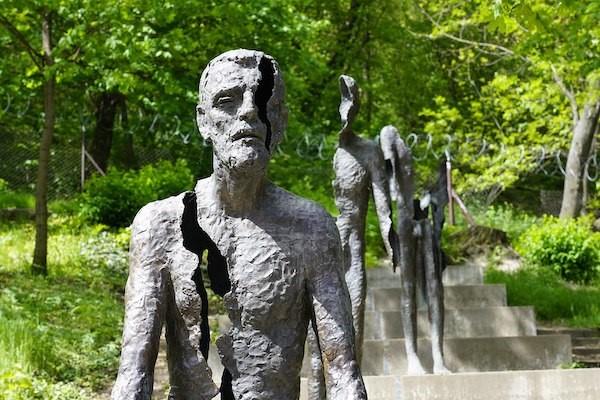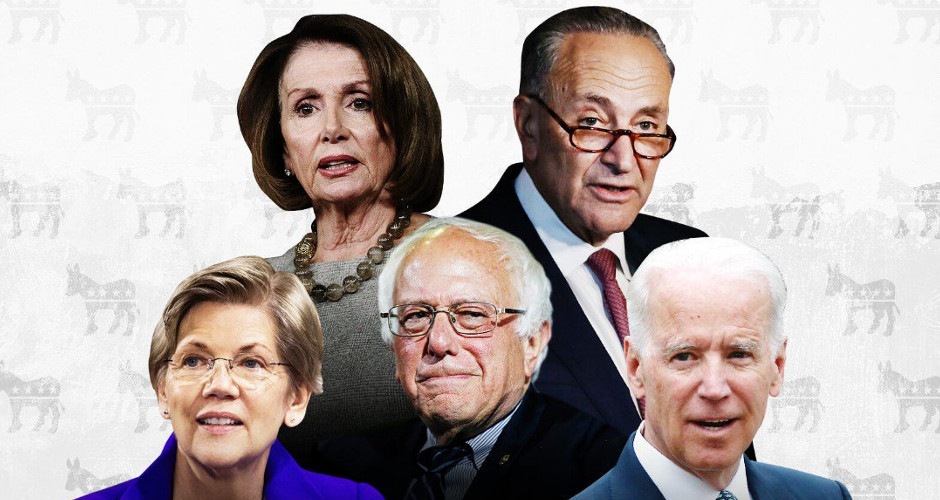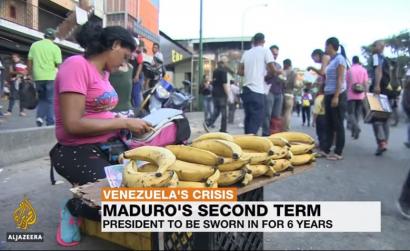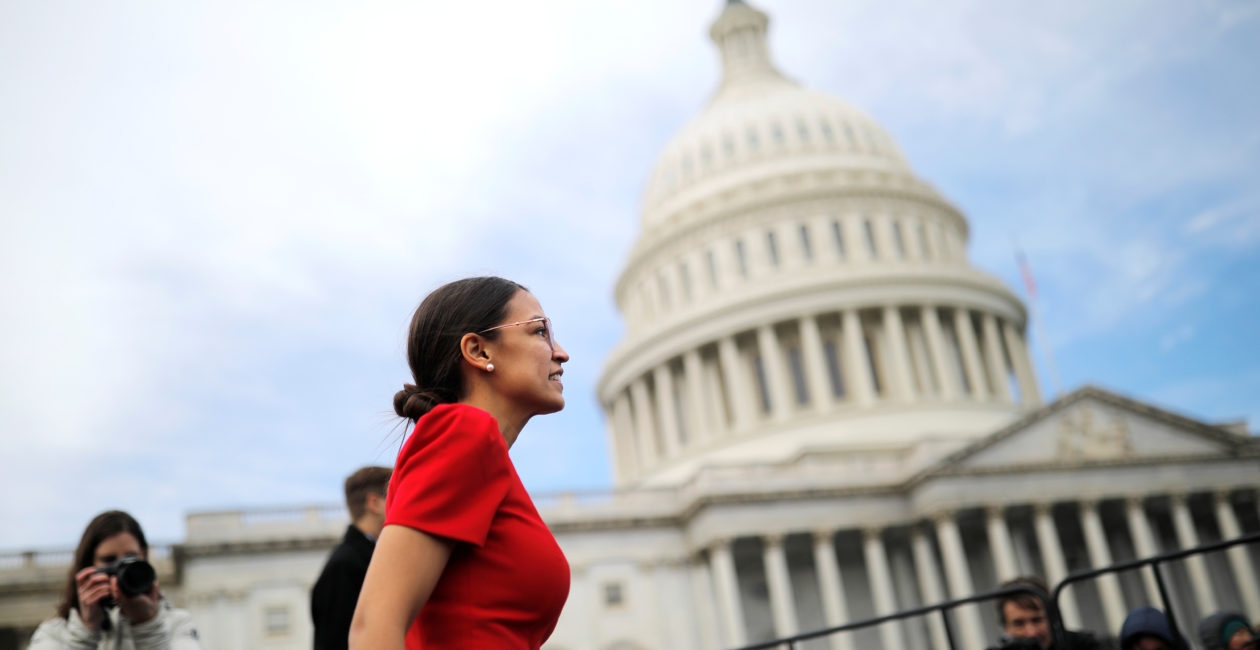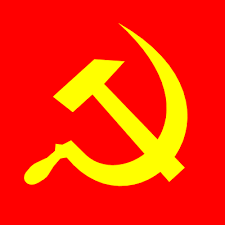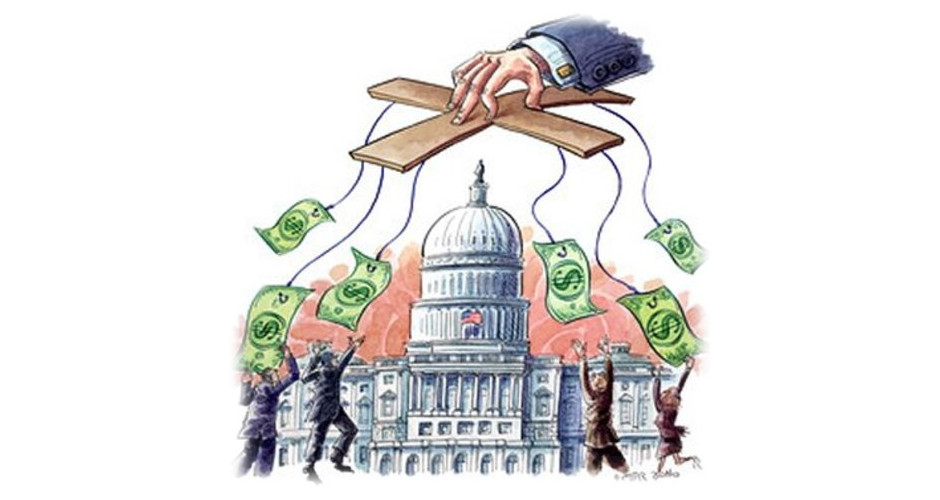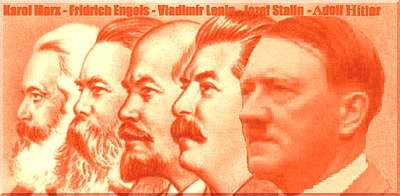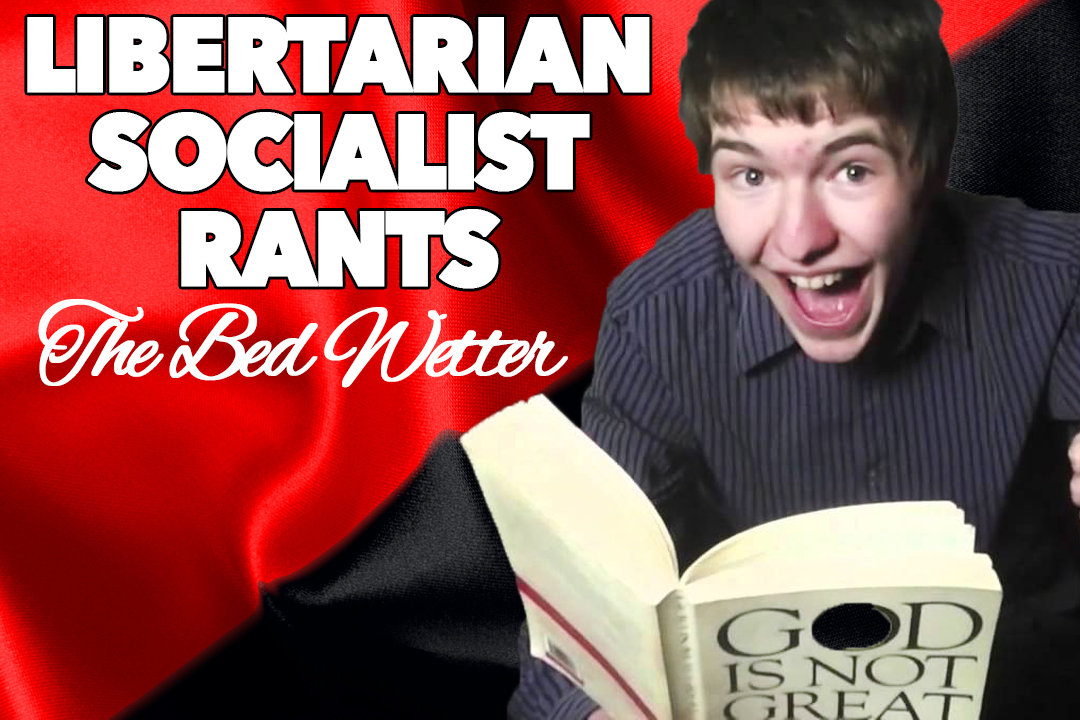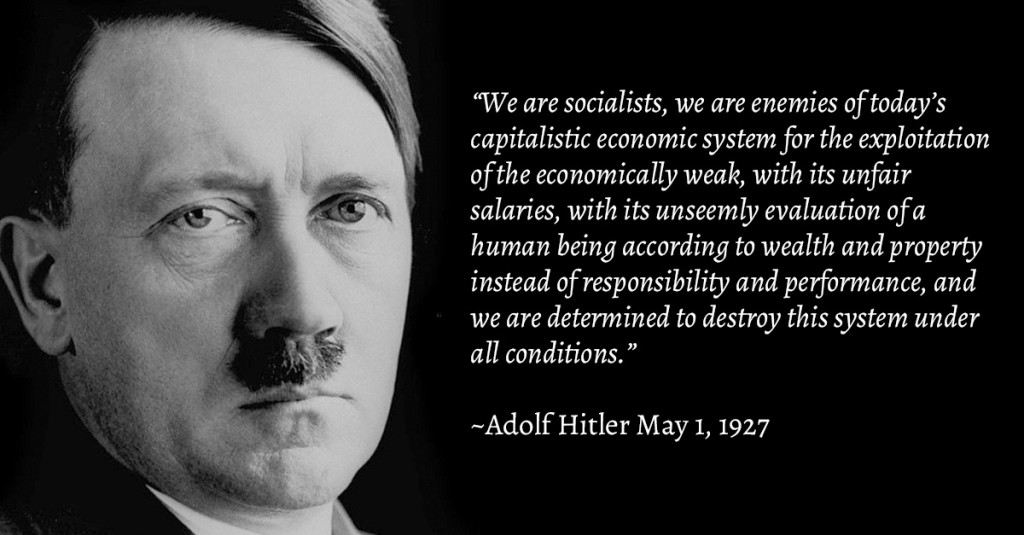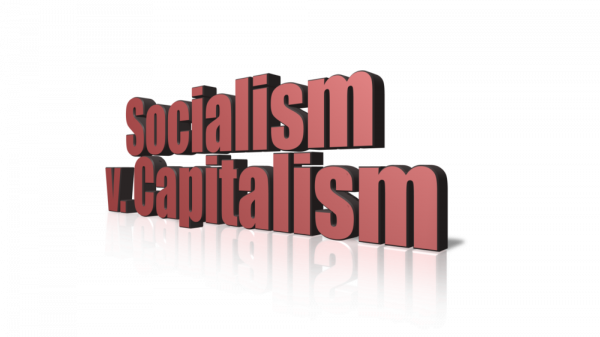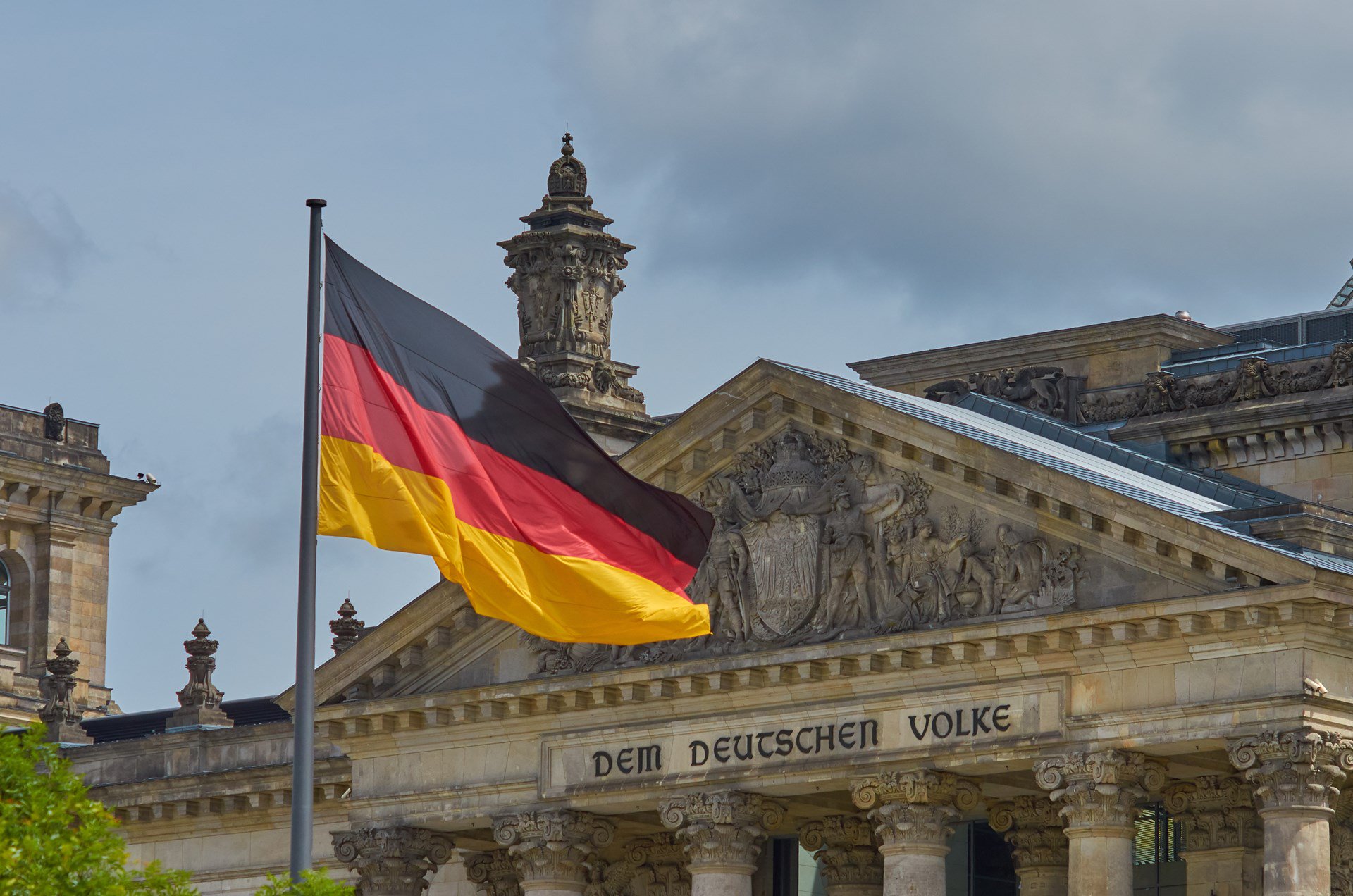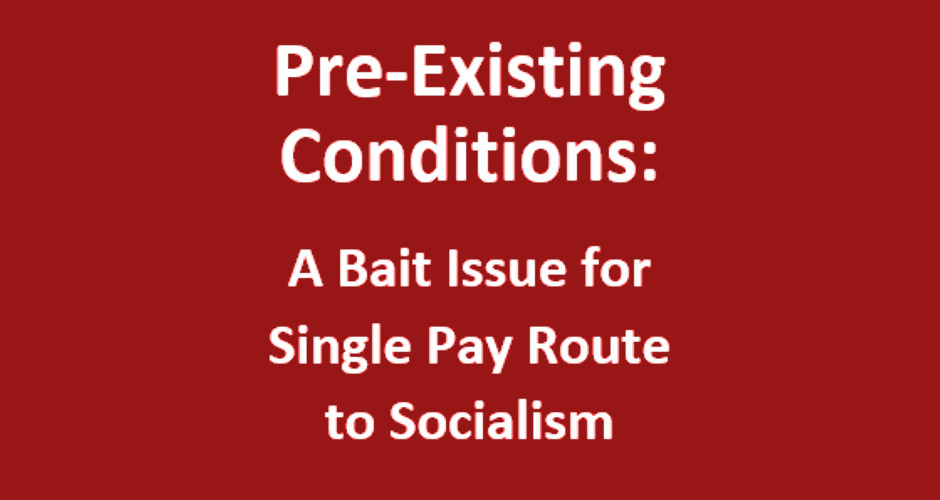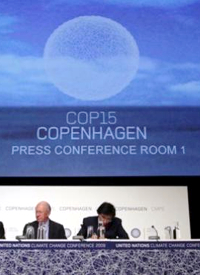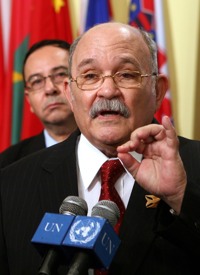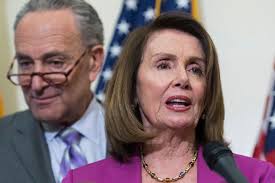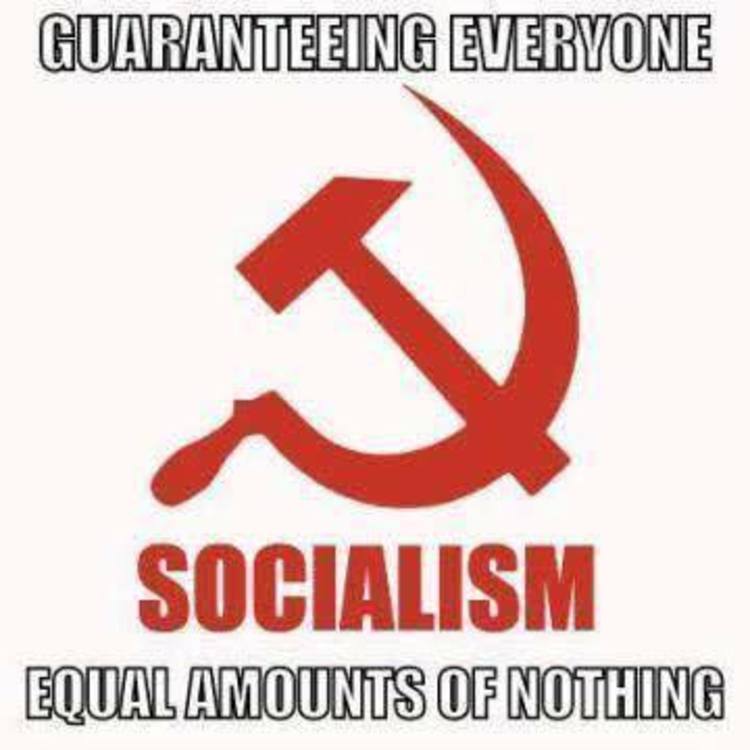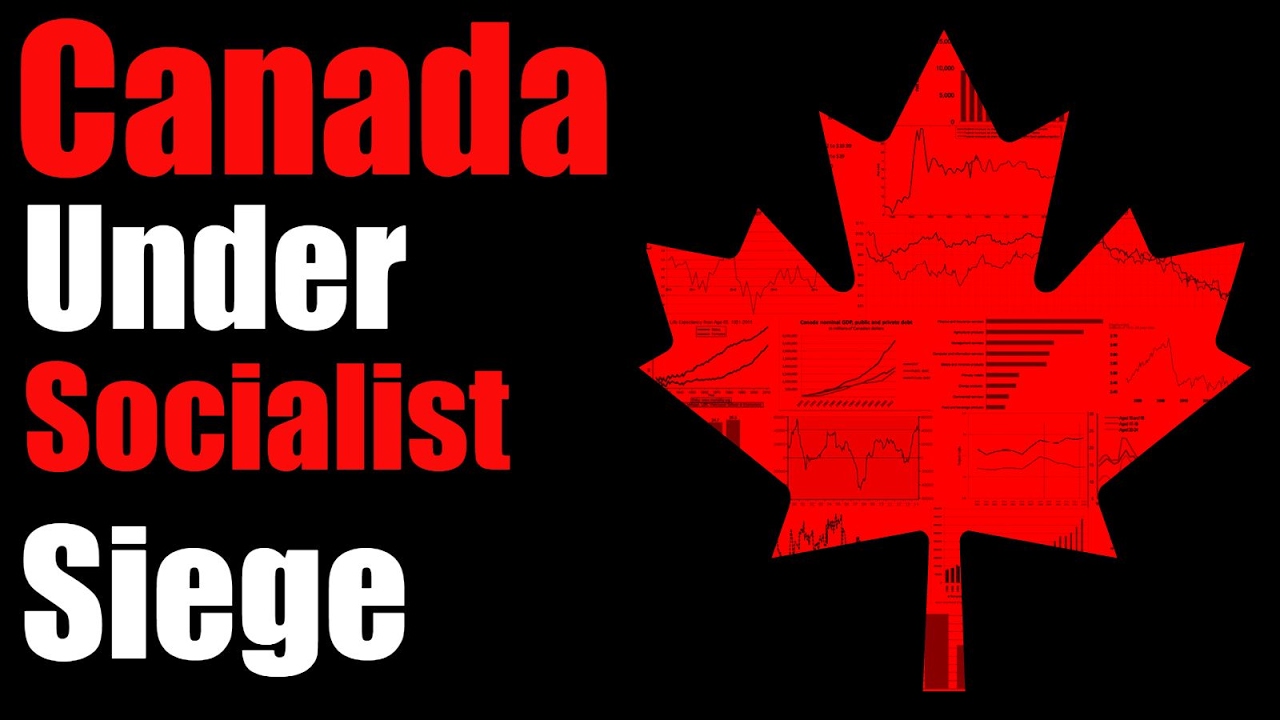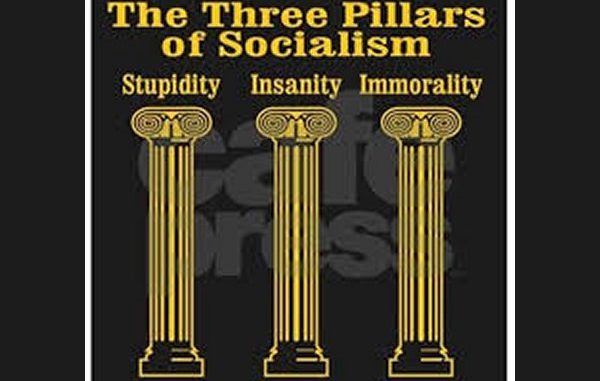SOCIALIST TAXONOMY
The term ‘socialism’ is relatively recent, appearing for the first time some 200 years ago in 1827 in the Co-operative Magazine in writings by some followers of Robert Owen. Undoubtedly the term was used by Owen in 1835 in the sense of an economic organisation constituted in the interest of workers. The concept of ‘communism’ has more distant origins and a more noble lineage that go back to Plato, Thomas More, Rousseau and Fourier, but acquire new strength and substance in the writings of Marx and Engels (notably the 1848 Manifesto of the Communist Party, though still vague about its precise organisational and policy specifications).
Griffiths (1924) collects 199 definitions of socialism supplied by British intellectuals, trade unionists and politicians of his time (including Maurice Dobb, Bertrand Russell and Sidney Webb). Griffiths’ Symposium was supposed to celebrate the great debate on ‘Socialism versus Capitalism‘ that took place in the House of Commons in 1923, on a motion advocating “the gradual replacement of the capitalist system with an industrial and social order based on public ownership and on democratic control of the means of production and distribution” (Griffiths 1924, p. ii). The motion was rejected by 368 votes to 121. The Symposium also commemorated the formation in 1924 in the United Kingdom of the first Labour government.
Many of these contributions offered sentiments rather than operational suggestions; some saw socialism as an expression of Christian teachings. In Great Britain in the 1920s socialism, to the extent that it was defined at all, was largely interpreted as common ownership of the means of production, without any consideration of the possibility of a mixed economy or a role for markets.[3]
The diversity of possible definitions reflects the multi-dimensional nature of the socialist project. For the purpose of simplification the essential components of socialism can be reduced to four:
- A) dominant public property and enterprise (state, co-operative or collective, local) or at any rate a substantial public presence at least in the ‘commanding heights’ sectors of the economy;
B) equality, associated with a large share of social consumption;
C) economic participation and democracy (not necessarily representational political democracy); and
D) effective social control over the main economic variables (income, consumption, accumulation, employment, growth, internal and external balance). Such control does not necessarily imply centralised ‘imperative’ planning as long as – in the possible case of operational internal and international markets – there are ample and effective economic policy instruments with which the government might exercise effective control on macroeconomic performance. Reliance on effective macroeconomic control seems preferable to a classification based on the relative weight of markets and of administrative instruments (of the type proposed by Popov 2009), since effective control may or may not be present independently of the kind of instruments that are actually used.
If we assign a value 0 to the absence or strong attenuation of each of these four elements, and 1 to its significant presence, 16 alternative models can be generated: some existed only as projects that were never implemented anywhere, others actually existed but no longer exist, others still exist. The simplification proposed here ignores nuances which are often important in the value to be assigned to the various constituent elements; the problem is that even the introduction of a single additional intermediate value of 0.5 would broaden the corresponding taxonomy to 81 possible categories, the majority of which would not correspond to any system, whether ideal or actually implemented in the past or still in existence today. An excessive increase in the number of systems would follow also from the introduction of an additional constituent element with value 0 or 1, which would double the possible systems to 32.
Examples of various combinations of ABCD are given below (italics = never existed, underlined italics= existed only in the past, simply underlined = still exist).
We leave aside utopian systems that never existed:
1111. Ideal maximalist socialist system; in theory also the Chinese Cultural Revolution (1966-1976);
1110. Full communist ideal: collective ownership, from everyone according to capacities, to everyone according to needs; the state ‘withers away’ (Lenin, The State and Revolution, 1917, section 4) and the economy of abundance does not need a plan; only partly approached during the period of Soviet War Communism (1918-21) to deal with wartime emergencies;
1011. The Yugoslav model in theory, with social property, i.e. subject to a right of usufruct by employees on the capital of self-managed enterprises of the kind theorised by Ward (1958), a usufruct non-transferable and conditional on their continued occupation. Inequality among regions, sectors, enterprises. Macroeconomic control principally achieved through monetary policy (including access to and cost of credit).
We are left with five basic models of ‘realised’ or ‘really existing’ (or existed) socialism, an expression coined by Bahro (1977) to indicate the practical realisations of socialism’s inspiring principles, not guaranteeing their correspondence with principles but, on the contrary, implicitly stressing their inadequacies with respect to those principles:
1101. China (1978-end ‘90s): ‘socialism with Chinese characteristics’, ‘growth and equality’, ‘market socialism’, dominant public ownership on the part of state enterprises and territorially based cooperatives belonging to local authorities (Town and Village Enterprises); moderate authoritarianism; in 1997 there begin the first privatisations (which will accelerate in 2007).
1101. The Chinese Cultural Revolution in practice: loss of control on the part of the state, famines, authoritarianism. Also, Taiwan in the ‘60s (60% of GDP in the state sector), and some developing countries.
1010. The New Economic Policy (NEP) in the USSR 1921-26, with the restoration of private ownership and enterprise, internal and international markets, monetary and fiscal balance, reduced but still present power to Workers’ Councils, inequality. Yugoslavia in practice (1950-1990), with social ownership subject to employees’ usufruct of the capital of self-managed enterprises, inequalities among regions, sectors and enterprises – as in the 1011 ideal blueprint above but with ineffective macroeconomic control of the economy, subject to unemployment, emigration, fluctuations and open inflation.
1001. Soviet-style central planning (1928/32-1990), with dominant state ownership and enterprises, a minor role for cooperatives and local authorities owned enterprises; absent or negligible private property. Low commitment to equality: no wage levelling under Stalin (no uravnilovka); higher wages for shock-workers and the skilled; endemic excess demand at artificially low prices, with higher than equilibrium prices in black markets accessible to those with cash; privileges for the party nomenklatura; discretionary incentives awarded by enterprise managers. Democratic centralism, i.e. in practice a communist party political monopoly pervading the state and the economy at all levels, enhanced by the 1921 prohibition of factions. Such a system, successfully transplanted in Central Eastern Europe and other countries of the world after the last War, included Yugoslavia 1945-50, China 1952-60 and Albania 1946-90 (apart from a filo-Chinese interlude in 1960-78. Today such a system survives only in Belarus, Uzbekistan, Turkmenistan and Cuba (even in North Korea the greater part of the population is reported to be living on incomes produced in the private sector).
According to our taxonomic criteria, today’s China belongs to the same category 1001, starting from the year 2001 when it joined the WTO and therefore has been exposed to the discipline of international as well as internal markets, however subject to effective instruments of traditional economic policy (fiscal, monetary, exchange rates, public enterprises, direct controls) that guarantee control over the management of the economy. Public ownership is still substantial (in spite of the disappearance of Town and Village Enterprises and the apparent dominance of the private sector, except for the dominant state ownership of the banking sector) to the point that it is often classed as a form of state capitalism (Coase and Wang 2012, 2015; Naughton and Tsai 2015). Inequality is very high, with a Gini coefficient (between 0 indicating absolute equality and 1 to indicate concentration in a single individual) of income distribution of 49% in 2012, fallen slightly to 47% in 2015, second only to South Africa and Brazil, compared with a coefficient of 41% in the United States. There are no forms of participation and economic (let alone political) democracy.
1000. Some post-socialist economies in the early years (1990-93) of their Transition, including Vladimin Putin’s Russia today: a dominant residual state sector, often restored after initial privatisations; inequality; lack of participation and economic (as well as political) democracy; high unemployment, inflation and recessions.[4]
The remaining eight economic systems generated by the proposed taxonomy are listed below for the sake of completeness:
0111. Scandinavian type social democracy:private property and enterprise, collectivisation of individual risks (old age, illness, invalidity, large family) and social risks (poverty, unemployment), economic participation and democracy, full (i.e. high and stable) employment obtained primarily through fiscal policies.
0110. A weaker form of social democracy in several European countries, with widespread de-regulation and blander forms of state intervention than those envisaged in the previous ideal 0111.
0101. The Nazi-Fascist model of the economy. Dominating private ownership and enterprise, populism (understood as non-sustainable or outright impossible promises), authoritarianism, widespread and deep state intervention in the economy both at the macroeconomic and the enterprise level.
0100. The Welfare State. The Scandinavian model of social democracy from the end of the 1980s: nominal participation, rising unemployment; the European Social Model of social dialogue, introduced to a varying extent in the European Union in the 1990s and the early 2000s.
0011. Neo-corporatism of Austrian type (1960-90): dominant private ownership and enterprise, representation of interest groups; a modest commitment to egalitarian policies, prices and incomes policies, Keynesian fiscal policies. The so-called ‘stakeholders’ economy proposed but never realised by New Labour in the United Kingdom in 1996-97 (stakeholders = bearers of legitimate interests other than those of owners/shareholders, in their role as dependent workers, managers, customers, suppliers, creditors, debtors, local authorities, the environment).
0010. Co-determination (Mitbestimmung) typical of post-War Germany, with a minority representation of employees in the Board of Directors of their enterprises, in special sectors; the social market economy understood as a guarantee of competition and social peace. Pay is linked to enterprise results also in Japan, often graded depending on seniority, with a flexibility in the course of the business cycle that is associated with greater employment stability.
0001. French-type indicative planning: Macroeconomic and sectoral forecasts, whose realisation is expected to result from the collaboration of social parties (trade unions, employers’ federations, regional representatives, consumer representatives, the Commissariat Au Plan, see Masse’ 1965) that contributed to their preparation and from their consensus – as well as from ordinary and extraordinary instruments of economic policy (including quasi-contracts between government and enterprises reached through fiscal incentives).
0000. The capitalist system pure and simple including many of its variants such as: the mixed economy; the managerial capitalism of large companies and professional managers; the so called Third Way of a bland (or rather perverted, as we shall argue later) version of social democracy, exemplified by the Blair-Brown government in the United Kingdom (1997-2010); and a fortiori the neo- or hyperliberal model of Reagan-Thatcher in the late 1980s and the 1990s.
In this essay I will deal in the first instance with the Soviet-type model, its rise, evolution and collapse, as well as the general problems of post-socialist transitions. I will then consider the social democratic model of socialism, exemplified by the European Social Model and other capitalist countries pursuing socialist values in a market economy without dominant public ownership and enterprise. Towards the end of the 1990s the social democratic model was perverted by leaders adopting hyperliberal, austerian and globalist capitalism, leading to crisis, unemployment and mounting inequality. In the last few years this deformation of traditional social democracy has met with repeated, resounding electoral defeats, in favour of parties promptly accused of populism but actually expressing popular discontent. A planned sequel to this long essay, already under preparation, will deal with the future of socialism.
The rise of socialism is rooted in the drawbacks of capitalism. Therefore, the nature, advantages and drawbacks of capitalism must be considered in the next sections 2-6 before investigating the rise and fall of socialism.
Capitalism
Capitalism is one of the greatest social inventions of mankind. The combination of private property, free enterprise, market coordination of production and exchange, money, and wage labour was enhanced by the creation of joint-stock companies, fractional reserve banking, the state provision of law and order and public infrastructures, the opening of trade and investment relations between states and the development of financial markets.
The standard wage contract 1) can be terminated at short notice; 2) fixes a money wage per unit of time, with effort guaranteed by penalty of termination and of competition by a large labour reserve army, while capital takes all the residual surplus; 3) gives the capitalist complete discretion to organise production, deciding what and how to produce and sell.
The capitalist system promoted urbanisation, industrialisation, technical progress, economic growth and prosperity on an unprecedented scale: paradoxically the highest praise for capitalism can be found in Marx and Engels, Manifesto of the Communist Party (1848, ch. 1):
“The bourgeoisie, during its rule of scarce one hundred years, has created more massive and more colossal productive forces than have all preceding generations together. Subjection of Nature’s forces to man, machinery, application of chemistry to industry and agriculture, steam-navigation, railways, electric telegraphs, clearing of whole continents for cultivation, canalisation of rivers, whole populations conjured out of the ground—what earlier century had even a presentiment (of) such productive forces . . . The bourgeoisie, by the rapid improvement of all instruments of production, by the immensely facilitated means of communication, draws all, even the most barbarian, nations into civilisation”.
At the same time Marx viewed capitalism as a form of systematic labour exploitation. Primitive societies were not exploitative because they exchanged goods roughly embodying the same amount of labour. Slavery was less exploitative than it seemed, for slaves’ consumption allowed them to recover some of their own labour that looked entirely unpaid. Feudalism was openly exploitative, for the amount of work performed by labourers for themselves and for their feudal masters was clearly stipulated and visible; whereas capitalism does not look exploitative at all, since all labour is paid for, but workers perform more work than is embodied in their means of consumption and a surplus of unpaid labour is appropriated by capitalists.
Marx neglects altogether entrepreneurship, uncertainty and risk and their rewards: on that basis a positive share of profits is sufficient to infer exploitation, without the unnecessary detour of his labour theory of value.
The replacement and growth of fixed capital would be necessary in any mode of production (including socialism, Pareto 1890): exploitation should be restricted at most to capitalists’ consumption. But Marx regarded all profits, consumed or re-invested, as equally exploitative as originating in ‘primitive accumulation’ ultimately rooted in theft, robbery, war, conquest and other forms of violence.
Inequality of wealth and incomes was recognised as a defining feature of capitalism. Its redeeming feature was the financing of investment and growth: “Accumulate, accumulate! This is Moses and the Prophets” (Capital, Vol, I, ch.24).
Marx modelled intersectoral flows and equilibrium conditions for a stationary and a growing economy in his schemes of simple and enlarged reproduction (with two vertically integrated sectors producing consumption and investment goods respectively). However, he exaggerated the instability of a capitalist system by assuming that profits necessarily would have to be reinvested in the same sector in which they originated, while in any capitalist economy re-investment is never subject to such an arbitrary restriction (Lange 1970 amplified unreasonably this presumed instability of the system maintaining this undue sectoral restriction in a multi-sector model).
Marx regarded capitalism as a totally chaotic and anarchic system, naturally generating unemployed labour and under-utilisation of other resources, as well as costly fluctuations and economic crises. However, he neglected automatic processes of economic adjustment, operating imperfectly, often either too fast or too slowly, but typical of the operation of markets in a capitalist system.
These automatic processes are: in the short-term, for a given level of production, the Walrasian adjustment of prices to any positive or negative excess demand; in the medium-term, when production levels can vary, the Marshallian adjustment of enterprise output to price relatively to its marginal cost; as well as the transmission to other sectors of the inputs requirements corresponding to their output change (activating what Goodwin 1949 calls ‘the multiplier as matrix’). In the longer term, when productive capacity can vary, there is a gradual adjustment of the actual capital stock to the level desired by enterprises in consideration of the demand level they experience – an upwards adjustment via investment in new capital or downwards through the non-replacement of excess capital. These adjustment processes are rooted in the maximisation of profit on the part of enterprises operating in a system of markets, whose owners appropriate profit to their own advantage. And we need to stress that these adjustment mechanisms auto-regulate production, prices, intersectoral transactions and productive capacity but naturally they do not regulate themselves as institutions (in a process that would amount to ‘autopoiesis’); thus, their creation, regulation, and guarantee remain fundamental functions of the state even in a fully de-centralised market economy.
Goodwin (1947, 1951a and 1953) likens the adjustment mechanisms operated by markets to homeostatic mechanisms, such as for instance a thermostat, that records the actual temperature, compares it to a pre-fixed desired temperature and automatically activates heating or cooling systems in order to reduce the difference between actual and desired temperatures (see also Leijonhuvfud 1970).
This kind of logic is less cogent and much more controversial in the case of financial markets. Financial intermediation creates value by modifying the size, time horizon and riskiness of assets demand and supply, but their continuous operation is associated to phenomena of both euphoria and panic. Financial markets contribute to economic growth at the cost of a greater vulnerability and potential instability. Keynes believed that financial investment should be indissoluble like marriage (or better, we should say that investment divorce should be equally costly and traumatic). Derivative products, whose value depends on the value of underlying assets, which they amplify and multiply, can contribute to the increase of total risk instead of its distribution among a large number of agents. This is why Buiter (2009) proposed to reserve derivatives transactions to agents who could justify them on the basis of an underlying insurable interest.
The alternative to markets seen as automatic thermostats is the manual regulation of temperature or of equivalent processes; manual control – in economic terms – corresponds to central planning. The desirability of self-regulating market mechanisms with respect to central planning depends on the speed of reaction of the system, on its tendency to reduce or to amplify the possible divergence between objectives and reality, from the stability or otherwise of such processes. There can be circumstances in which manual control (planning) is preferable to the automatic control (markets). My favourite example, which I used to inflict on my students, is taken from Star Wars: when Luke Skywalker is trying to strike at the heart of the Empire with a single shot, he disactivates the automatic aiming mechanism and choses to do it manually. But he is justified by exceptional circumstances: there is only one target, which he can either hit or miss without intermediate degrees of success, and … the Force is with him.
The automatic adjustment processes discussed here, built into a market system, in spite of their imperfections have made the capitalist system more flexible, at the same time exposing it to the risk of possible episodes of much greater unemployment, instability and stagnation than would have been the case otherwise.
THE GENERAL ECONOMIC EQUILIBRIUM UTOPIA
In the popular tradition as well as in lower grade theoretical writings we find a mythical vision of capitalism as a system of guaranteed efficiency. In such an ideal world everybody maximises their own utility subject to budget constraints, equalising substitution rates in consumption goods to their relative prices; each enterprise maximises profits choosing the output level at which marginal cost equals price and equalising the substitution rates between different inputs to their relative prices. If we rule out some additional difficulties to be discussed later in this section, there derives a general economic equilibrium which enjoys the properties of Paretian efficiency: it would not be possible to produce more of one product without producing less of some other product, and it would not be possible to improve the utility of one economic subject without necessarily worsening the position of another subject.
Unfortunately this kind of economic system is a utopia, in the literal sense of a system that does not exist and could not possibly exist. First of all markets as we know them are incomplete, with respect to those that would be necessary to validate this vision. Missing are intertemporal markets for future goods, except for a small number of homogeneous primary products and domestic and foreign currencies, and mostly for relatively short time horizons. Second, missing are also contingent markets, for goods associated to particular ‘states of the world’, which could eliminate risk (when the probability distribution of future events is known and therefore the risk is insurable) but in any case could not eliminate uncertainty (when the probability distribution of future events is itself not known – an important distinction introduced by Knight 1921).
Third, in order to guarantee the expected efficiency properties, if all of these markets existed they should open, register transactions for all future periods from now to eternity and for all the possible states of the world, and then close without ever reopening again, leaving the contracted transactions to be implemented without fail from now to Kingdom come. If markets reopened, in fact, the purchase of future goods could be delayed into the future, and transactions would be affected not only by current prices and quantities but by the agents’ expectations of future prices and quantities prevailing in spot markets in all successive periods, with no guarantee of resulting efficiency (Keynes 1921 e 1936, especially ch. 12, and Goodwin 1947 section IV). In the real world as we know it markets open, close and reopen continuously, indeed in the global economy they rarely close, except on the occasion of universal festivities. Expectations rule, not prices.
Even if, absurdly, all these markets existed and opened and closed once and for all as soon as transactions were completed, nobody could guarantee the execution of contracts, which would restrict drastically the volume of economic activity. And in any case these markets could never involve labour services, without submitting labourers to slavery or to feudal conditions of irrevocable subjection to a master or an enterprise, which in turn would be compelled to employ them. Such a system could be considered as an ‘exchange economy (as ambigously called by Debreu 1959, one of the main theoreticians of General Economic Equilibrium) but – most emphatically and incontrovertibly – not a capitalist system where wage labourers are exposed to the risk of sudden dismissal and at the same time are free to leave their current employment at will at any time[5].
In the Keynesian world in which we live savers do not necessarily need to convert their savings into current demand for future goods, and this is the reason why an excess of savings over investment cause unemployment rather than the desired accumulation of wealth. Wage downwards flexibility may improve or worsen the rate of unemployment, depending on the net result of its impact on net exports (positive in an open economy with import and export demand and supply sufficiently elastic, but necessarily zero in a closed system such as the global economy), the negative impact of the corresponding reduction of wage-earners’ consumption, and the uncertain impact on investment (at the same time poised to fall because of the likely reduction of capital intensity but poised to rise because of the likely increase in productive capacity).
For all these reasons the only realistic and rigorous development of the theory of general economic equilibrium has been the ‘temporary’ equibrium of Hicks (1936), with a sequence of short period equilibria which do not necessarily correspond to agents’ expectations and therefore do not necessarily enjoy efficiency properties and therefore corresponds to the Keynesian picture (see Drèze 1999).
Neoclassical economic theory has sought to overcome these difficulties primarily by introducing ad hoc hypotheses that substantially neglect their existence rather than resolving them:
1) Malleable capital, which at any time could be transformed into an increase of productive capacity, or consumed if excessive; if one adds the hypothesis that the aggregate production function is a Cobb-Douglas (with constant returns to scale, unlimited substitutability between Labour and Capital with constant elasticities with respect to factors, adding up to unity) factor income shares correspond to these respective elasticities and income distribution is determined, in Joan Robinson’s words, “by God and engineers”. These hypotheses were strongly criticised by Cambridge (England) economists in the controversy on Capital Theory of the 1960s, (see Cohen and Harcourt 2003);
2) Partial equilibrium by an economic agent with respect to a given single change of price (or of quantity, or of technology), without considering the feedback of partial equilibria changes on the overall system – a feedback of the type investigated by Kaldor (1959) with his representative enterprise (whose demand curve replicates the behaviour of aggregate demand in the whole economy depending on the phases of the cycle, juxtaposed to the equivalent Marshallian enterprise with a given demand curve invariant in the cycle, see also Harcourt 1963);
3) Perfect knowledge of the future, which is inconceivable in the case of a plurality of economic subjects who actually determine or influence that future with their own individual actions;
4) The hypothesis of Efficient Markets, in whichprices reflect fully the entire information available (Fama 1965, Samuelson 1965), including the expectations of all market participants, in which case price variations cannot be anticipated: everybody will exploit the slightest informational advantage (and if you see a $100 banknote on the pavement you should not stop to pick it up because if it were real somebody else would have picked it up already…);
5) The hypothesis of rational expectations (Muth 1961, Lucas 1972), which in truth are nothing of the kind but simply presumed to be correct in the sense of not generating surprises. Although discredited (for instance, disowned even by Muth who had introduced them) rational expectations are instrumental to the thesis that government policy is always ineffective because it is correctly anticipated by the public. Another by-product of this theory is the principle of Central Bank independence from the government: rational expectations imply a rapidly declining, almost vertical Phillips Curve relating inflation and unemployment (there is a family of Phillips Curves each for a rate of expected inflation, and only the points where actual corresponds to expected inflation matter, designing a steeper ‘true’ Phillips Curve): therefore there is no or little trade off between inflation and unemployment, so that inflation targeting can be delegated by the government to an independent Central Banker.
Soviet planners sometimes maintained that their central planning was always necessarily optimal, for if they had known how to do it better they would have done it. Certainly it should be easier to recognise opportunities for a better allocation of resources on the part of multiple economic subjects engaged in repeated bilateral transactions in a market economy, thanks to the division of knowledge shared out by economic subjects (Hayek 1945) than on the part of a single central planning agency. But plan construction could be decentralised, as envisaged by Lange (1936 and 1937, which is a rebuttal of Hayek 1935 on the alleged impossibility of economic calculus under socialism) or by the planning procedures modelled by Ward 1967. With these decentralised procedures, mimicking markets by trial and error, both Efficient Markets and Optimal Planning would be equally plausible (or rather equally implausible).
Still, from the viewpoint of general economic equilibrium, the efficiency of markets requires various additional strict conditions: 1) perfect competition; 2) lack of increasing returns to scale (which would be incompatible with perfect competition); 3) lack of external economies or diseconomies, which would distort marginal costs; 4) symmetric information shared by all economic subjects; 5) the uniqueness of equilibrium. We know with absolute certainty that none of these conditions is satisfied in any corner of the world in which we live.
The original general equilibrium model a’ la Walras-Arrow-Debreu was subsequently developed by aggregate macroeconomic models that have little in common with the original approach except some limited interdependencies among aggregate variables, in order to produce DSGE or Dynamic Stocastic General Equilibrium models. In his answer to criticisms of their utility in the analysis of the latest Great Depression, Blanchard (2018) recognises that they are “seriously defective, but are eminently improvable and central to the future of macroeconomics” (p. 45; the entire volume of the journal in which Blanchard publishes these valuations is devoted to DSGE models). Ai posteri l’ardua sentenza (‘future generations will judge’).
Even if all conditions for market efficiency were satisfied, there is no reason whatever to believe that markets are actually fair from the viewpoint of income distribution. In fact such distribution depends from the initial distribution of productive factors (i.e. of wealth, including the time which is available to all and which can either be consumed as leisure or used in labour activities transforming it into products or salary), from market determination of prices for products and prices, from the preferences of economic subjects, from technology and institutions. Therefore there is no reason whatever why the resulting distribution, depending on cumulative random factors, should be regarded as fair, whether by the majority of economic subjects or by a democratically elected government through which a society expresses its collective values, or in the judgement of representative international organisations (for instance from the viewpoint of the Sustainable Development Goals for poverty reduction and other distributive objectives adopted by United Nations for 2030).
On the contrary, markets may be regarded as doubly unfair, because income distribution depends upon an unequal and arbitrary distribution of wealth which is not democratic (one dollar one vote, as it were, instead of one head one vote) and because this unequal distribution of income is translated into further unequal increments of accumulated wealth. Finally, precisely from the viewpoint of general economic equilibrium, wages should be considered as equivalent to the value of time devoted to work instead of leisure, and therefore strictly speaking should be excluded altogether from national income accounting at least for the purpose of inequality measurement, instead of being treated like the revenue of those rentiers who enjoy as leisure the entire time at their disposal without being forced to transform it into goods or salary for their subsistence.
CAPITALISM: INEQUALITY, UNEMPLOYMENT, FLUCTUATIONS
The high and growing inequality of the capitalist system is well documented by Popov (2017). In brief, in the eighteenth century in various European countries we observed a high Gini coefficient (defined above) in income distribution, of the order of 50%-60%. In the twentieth century the tendency towards increasing inequality in income and wealth distribution was temporarily interrupted in the period 1914-73: two World Wars and the Great Depression reduced inequality due to the physical destruction of capital and the fall in its value, and also due to the social policies adopted by the United States with the New Deal and in Europe after the last War. These social policies were encouraged among other things by the parallel reduction of inequality in socialist countries, characterised by Gini coefficients of the order of 25%-30% (a cartoon of the 1960s illustrated this phenomenon with a tree planted on one side of a fence that bore fruits only on the other side).
In the 1980s we observe a new increase in the inequality of income and wealth distribution. The countries of the socialist bloc begin to stagnate and decline. The ascent to power of Reagan-Thatcher led to neo-conservative and hyperliberal policies, hostile to workers and to re-distributive policies, the welfare state was reduced, unemployment rose to levels unprecedented in the previous 50 years, trade unions weakened and the number of their members fell. Taxation, that in the years 1940-80 in the United States, United Kingdom, France, and Germany had reached a progressivity higher than 50% up to marginal rates above 90%, by 2010 was significantly reduced; from 1980-2017 in advanced countries the maximum taxation rate was reduced by 40% (IMF 2017); some countries introduced a low and uniform tax rate (flat tax) on all incomes and in indirect taxation, or in any case on all capital income (unearned) restricting progressiveness to labour incomes (earned).
Other factors concurred to inequality increase: trade and investment globalisation, which tends to produce positive net benefits but (as we shall argue below) inflicts losses to group of national workers, which in theory could be over-compensated leaving everybody better off but in practice are not; the increase in the wages of skilled workers relatively to those of the unskilled, variously attributed to a bias of technical progress and to the weakening of trade unions; the diffusion of the ‘winner takes all’ principle in the professions, the arts and the sports; the exceedingly fast growth of managerial salaries with respect to wages, due not to market operation but to the semi-feudal character of reciprocal determination of those salaries within the managerial class, as usually happens also within the political caste.
In 2016 the income share of the richest decile of the population was 37% in Europe, 41% in China, 46% in Russia, 47% in Canada, around 55% in sub-Saharan Africa, Brazil, and India and as much as 61% in the Middle East (World Inequality Lab 2018). According to Oxfam (2016) in 2015 the 62 richest individuals had increased their wealth by 44% with respect to 2010, matching the same total wealth of the poorest 50% of the world population, which on the contrary impoverished itself by 41% in the same period (in 2010 it took the 388 richest individuals to match the wealth of the poorest 50%). In the United States the income share of the richest 1% went from 11% in 1980 to 20% in 2014, compared to the 13% of the poorer half of the population, moreover in a period in which low productivity growth saw the general stagnation of incomes. Qualitatively similar trends, though less pronounced, are recorded in other advanced countries such as France, Germany and the United Kingdom. In the Eurozone the richest decile commands on average over half of net wealth, with Gini coefficients for wealth distribution highest in Latvia and Germany, respectively at 78.5% and 76.2%, and lowest in Slovakia and Malta at 49.2% and 58.6%. Since 2008, the wealth of the richest 1% has been growing at an average of 6% a year – much faster than the 3% growth in the wealth of the remaining 99% of global population: should that trend continue, by 2030 the top 1% would hold two/thirds of world wealth, $305tn – up from $140tn today (The Guardian, 13/4/2018).
At the global level income distribution recorded a small reduction in inequality due to the higher income growth in countries on average poorer like India, China and Brazil, but principally because of the under-representation of the richest in household surveys samples and the concealment of their wealth in fiscal paradises. Lackner and Milanovic (2011) note a global Gini coefficient for wealth of about 70.5% in 2008, with a reduction of about 2 points with respect to 1988; however, once corrected for the concealment of wealth (estimated by Oxfam 2018 at $7600 bn located in fiscal paradises) the Gini is much higher at 76% and the reduction almost vanishes. Between 2005 and 2015 in Europe the income Gini coefficient rose from 30.6% to 31.9% (to 41% in the United States), while income disparity between the top 20% and the poorest 20% increased from 4.7 to 5.2 times (Henning 2018, World Development Lab 2018).
Milanovic (2016) illustrates clearly the inequality in the distribution of income increases, much more marked than inequality of incomes. If one lines up the citizens of the world along the abscissae axis in terms of 1988 incomes in increasing order from the lowest to the highest, and along the ordinates the increment they obtained in 2008 (with the corresponding figures from 1980 to 2016 available on World Inequality Lab 2018, Fig. E4), one obtains a figure that resembles the profile of an elephant: the increment starts at very low levels, rises significantly for the global middle class, which remains relatively poor, and is most impressive for the richest 1% which was already very rich (the elephant’s trunk) while lower and middle classes of the richer countries experience stagnation, accompanied by insecurity and preoccupation about their childrens’ future. From 1980 to 2016 the percentile that goes from 99% to 99.1%, i.e. the poorest 10% of the richest 1% of the world population, captured 74% of the total growth for the entire period, while the top 1% obtained 27% (for an update of the Elephant Chart see Kharas and Seidel 2018).
Causa and Hermansen (2017) show the effects of measures of income redistribution to working age population in OECD countries over the last two decades, on the basis of family budgets. Personal income taxes, social security contributions and monetary transfers involve a significant reduction of inequality measured by Gini coefficients, which goes from 40% of the market distribution index in Ireland to 5% in Chile. However this reduction has been considerably weakened on average in the greater part of the countries in the period considered, especially since the mid 1990s – especially for the reduction of monetary transfers, both directly and through redistributive insurance, which are the most important in all OECD countries (naturally if transfers in kind are included the transfer decline is more contained). Income taxes appear to have had a smaller and heterogeneous role (relatively more important only in countries that do little redistribution, like Japan, Israel, Korea, and the USA) while social security contributions have had a weak but non-negligible role in several countries. Sometimes the impact of redistribution reduction was contained by more targeted interventions but this had not offset the adverse effects of redistribution decline on inequality. Such decline in redistribution stopped with the beginning of the 2008 crisis that triggered off redistribution mechanisms.
Popov (2017) stresses the negative consequences of inequality, from reduced institutional capacity (in terms of rule of law, corruption, effectiveness of government action, ease of doing business) to the incidence of criminality and homicides, the physical and mental health of citizens, and even obesity, besides social goods like life expectancy, education, women’s emancipation, social mobility and even the number of patents per head (Wilkinson and Pickett 2010).
In particular, inequality tends to perpetuate itself, raising the probability that individual incomes will depend closely on those of parents (what Krueger 2012 called the Great Gatsby curve), with consequent rigidities in the social and political structure of society. This is due to several mechanisms: the greater propensity of the rich to invest in human capital (education) of their children; the transmission of wealth through donations and inheritance; the mobilisation of personal connections in the search for employment and subsequent career advancement – all facts that produce low social mobility, usually measured by the elasticity of the income level or rank of children relatively to that of parents.[6] According to Oxfam (2018) two thirds of the wealth of the 2043 dollar billionaires in the world are the result of heredity, monopoly and cronyism. The rise to political power of billionnaires also in developed countries – from Berlusconi to Tusk, from Trump to Babiš – is evidence of the corruption of democratic processes caused by inequality.
Inequality reduces social cohesion and is associated to a reduction of an economy’s capacity to grow (Berg e Ostry, 2011, 2012; Stiglitz, 2012). Brückner e Lederman (2017) find that in the 1970-2010 period, on a vast sample of developed and developing countries, on average the increase of one percentage point in the Gini coefficient reduces GDP per capita by about 1.1% over a five years period, with a longer term cumulative effect of about -4.5% (at the same time confirming that in a sample of sole developing countries the impact of increasing inequality on the rate of growth is positive, as already established by Galor and Zeira 1993).
Concern about inequality as a typical feature of capitalism has been tempered over time by several considerations.
- Persistent inequality has always been an inexorable feature of our past[7] (Scheidel 2017).The only factor capable of offsetting this inexhorable tendency towards inequality of all human societies is violence – not that which we meet in daily life but violence on a large scale (The Great Leveler of his book’s title) which causes tens of millions of dead and destroys completely entire economies. These are biblical events of mass war mobilisation, transformation revolutions, state collapse and catastrophic pests – from the disintegration of the Roman Empire to the peasant revolts of the middle ages, from the Black Death to the French Revolution, to the decimation of the Americas indigenous populations caused by the diseases brought from Europe, the last two World Wars, the Russian and the Chinese revolutions.
These catastrophes hit to a greater extent the rich, who have more to lose than the others, thus re-establishing the balance between rich and poor until privilege and abuse re-take their course together with the newly found peace and stability. “Today this type of violence seems to have been reduced”, Scheidel (2017, Introduction) concludes – “which in itself is a good thing but casts some doubt on the perspectives of a more equal future” .
- A conflict is alleged between efficiency and equality, which is deemed to reduce incentives necessary to elicit effort and imagination for the benefit of society – although it remains to be proven that such a conflict exists for any change in any direction moving from any starting position, and to be established whether such a conflict, if any, is macroscopic or negligible.
- Inequality depends on the phases of capitalist growth, rising with industrialisation then peaking to a maximum and falling at higher levels of economic development (Kuznets’ curve, 1955).
- There is widespread indifference about inequality compared with the much greater concern about poverty: “Poverty bothers me. Inequality does not. I just don’t care” (Buiter 2007). And effectively in the last two decades while global population has increased by 1.4 billion the number of people living in extreme poverty (defined conventionally as $1.90 per day in 2011 Purchasing Power Parity) has decreased by about one billion, and the downward trend is the same independently of whether the poverty line is set at $1.90 or $10 per day. The prospect of putting an end to extreme poverty within 2030, which in 2014 was chosen by the United Nations as the first of their Objectives of Sustainable Development, today appears possible to realise, although additional efforts will be necessary in order to avoid the concentration of the poor in 31 small economies suffering from serious structural problems (Gertz-Kharas 2018). In any case it is natural that the increase in global GDP per capita would raise both the poverty threshold perceived by the poor and the propensity of the rich to contribute to its alleviation.
- Furman (2017) asks “Should Policymakers Care Whether Inequality Is Helpful or Harmful For Growth?” and answers “No”, because he believes that evidence is mixed, that the real question is whether inequality reduction policies lower growth, as he thinks to be the case, and that if inequality is harmful it is for spurious but controllable reasons.
The trouble is that the rich save proportionally more than the poor, and inequality sooner or later leads to a mismatch between savings and investment and to secular stagnation. This thesis was formulated first by Hobson 1902, and ri-proposed by Hansen 1939 to explain US stagnation in the 1930s; it was represented by neo-Keynesian economists such as Steindl (1952) and Marxists like Baran and Sweezy (1958) in the 1950s; Summers (2015) revived it as an explanation of the phenomena that accompanied the global Great Recession that started in 2007 and is still rampaging).
More generally, capitalism is afflicted by at least four different types of unemployment:
- Classical, due to the lack of capital equipment with respect to the stock that would be necessary to employ everybody, typically in countries in their early stages of development;
- Keynesian (Keynes 1936 and Kalecki 1933 in his 1971 collection, see Nuti 2004 on the differences between the two), due to a deficit of effective demand amplified by imperfect competition, which induces enterprises to refrain from employing workers even if their wage is lower than their marginal productivity, because they value marginal productivity not at the product price but at its marginal revenue;
- Schumpeterian due to ‘creative destruction’ induced by technical progress rendering obsolete products and production methods (Schumpeter 1942).
- Structural, caused by the mismatching or lack of correspondence between unemployed workers’ skills and those required to fill available vacancies.
Economic fluctuations are generated (to name but a few mechanisms) by the interaction of multiplier and accelerator (Harrod-Domar knife-edge growth); Samuelson (1949) actually considered such an interaction to be the only exception to the definition of economics as the science of allocation of scarce resources among alternative ends – which Lange 1963 considered as part of ‘praxeology’, the science of rational human action, whereas he followed Engels (Antiduhring) in defining political economy as the science of the laws that regulate the production and exchange of means of subsistence in human societies.
Another example of economic fluctuations typical of capitalism is the political cycle that compromises fiscal policies of full employment whenever they are attempted (Kalecki 1943); and the double impact of unemployment on wage growth relatively to labour productivity and therefore on the profit share, is always fully employed (Goodwin 1967). Excessive optimism leads to expectations of continuous growing increases in the value of assets, which create speculative bubbles that are non-sustainable and doomed to explode[8]. Minsky (1986) stresses how over time instability can be generated by continuous prolonged stability itself, which ends up creating optimism that raises excessively the value of assets thus compromising their sustainability, up to the moment when financial instability is triggered, which others have called a ‘Minsky moment’.
Kornai (2013) regards the surplus of productive capacity and labour typical of capitalism as a major engine of technical progress and innovation, a necessary price to pay in order to avoid the excess demand and therefore the shortages typical of socialism, aggravated by the lack of incentives rewarding innovation in case of success. He recognises the more serious incidence of corruption in a capitalist economy with a large state budget, but considers the market as a necessary though not sufficient pre-condition for democracy. However, Kornai seems to under-estimate the role of the state in the generation of technical progress (Mazzucato 2011, 2013), also because he neglects the role of the military sector and the adverse consequences of excessive protection of patents and intellectual property as a factor retarding innovation. Finally, it is highly questionable whether current high rates of unemployment, worsened by the austerity policies enforced by the IMF and the EU (with the tight constraints of the Maastrict Treaty, the so-called Growth and Stability Pact, and the Fiscal Compact) and concentrated on the younger generations, are really necessary to promote capitalist dynamism and innovation.
On the contrary Kleinknecht (2016) finds that wage stagnation due to unemployment actually discourages investment in labour-saving technologies and therefore slows down innovation and productivity increases: in 19 OECD countries over a time span of 44 years a wage increase (reduction) of one percentage point leads to an increase (reduction) of 0.32%-0.44% in the hourly value added per man. Moreover the rapid turnover associated with greater flexibility and precariousness of employment hinders the Schumpeterian innovation mechanism due to ‘creative accumulation’ (the continuous accumulation of small improvements, especially in complex products and services with a high knowledge-intensity), a less known but perhaps more important effect than Schumpeter’s ‘creative destruction’.
MODERN CAPITALISM: DOOMED, TRANSFORMED OR CORRUPTED?
Naturally over time capitalism has changed radically, but current trends have been variously interpreted, as evidence of its being doomed (Mason 2015), or tamed (Kay 2018), or corrupted (Standing 2016).
Mason (2015) argues that new technologies such as internet and the rise of the digital economy “are not compatible with capitalism … Once capitalism can no longer adapt to technological change, PostCapitalism becomes necessary… in short: … capitalism is a complex, adaptive system which has reached the limits of its capacity to adapt” (p. xiii; for a positive review see Gillies, Real World Economics n. 73, 2015).
Many consumption goods – all the media, literature, musical scores and recordings, photographs, films, television programmes, reproductions of works of art – and production goods such as software, are digital products, whose price cannot exceed their cost of reproduction which is zero or near-zero. Mason argues that “The rise of information goods challenges marginalism at its very foundations because its basic assumption was scarcity, and information is abundant. Walras, for example, was categoric: ‘There are no products that can be multiplied without limit. All things which form part of social wealth … exist only in limited quantities’” (Mason 2015, p. 163).
Gillies (2015) notes that these “areas of capitalism now being eroded are precisely the ones in which great capitalist fortunes were made in the 1980s and 1990s”, by owners of software companies and by media tycoons. In theory financing the production of digital goods could be achieved by advertising or by strict enforcement of legal protection of intellectual property, but both methods have limited effectiveness, the first because of its limited size and the second because of widespread piracy. Alternatively, the production of digital goods could be organised “in a decentralized and collaborative way” like Wikipedia, “utilizing neither the market nor management hierarchy” (Mason 2015, p. 129).
Gillies argues that, if groups of workers are going to be paid to produce digital goods, they cannot be paid by the private sector and therefore would have to be paid a wage by the state: PostCapitalism would be a form of socialism, not a traditional bureaucratic and authoritarian socialism but a more egalitarian and libertarian, ‘networked’ version. Gillies expects that the new socialism will be international, and that the same rise of the digital economy that brought about a decline of capitalism will “clearly favours the left in politics”.
But there is a more trivial, brutal solution to the effects of the digital economy, namely one in which digital goods, constrained by a zero reproduction cost and price, will only be produced in a much reduced scale within the bounds of voluntary selfless generosity, limited advertising income and ineffective protection of intellectual property. A somewhat impoverished world and a largely unchanged system would be the unattractive but more probable outcome. The digital economy rests on the continued real production of physical goods and their exchange, driven by ordinary markets just as much as any ‘earlier’ capitalist form. Reports of capitalist collapse have been much exaggerated.
Kay (2018) goes as far as writing: “I wish we would stop using the word capitalism”. He reminds us that, in nineteenth century capitalism, enterprises and large companies were in the hands of owners-entrepreneurs; in the twentieth century in the UK and the United States the role of entrepreneurs was delegated to professional managers, already in family enterprises and especially on behalf of a multitude of shareholders. More recently the role of shareholders was taken over mostly by pension funds, by insurance companies and mutual funds, whose investments are handled by professionals specialized in managing their portfolios.
After the last War firms become international and multinational, manage many plants in different countries and operate in a global economy that frees them of many domestic constraints, giving access to mobility of capital and labour, of goods and services. The enterprise is ‘empty’ (generating the hollow company), in the sense of transforming itself into a network of relationships, with a fragmented division of labour worldwide governed by intermediaries organized by markets, rather than by hierarchies as in the enterprise model developed by Ronald Coase in 1937. (Coase had asked why production was organised in firms instead of being conducted by self-employed individuals entering market relations, and why was production not organised in a single giant firm. He found the answer in the transaction costs of market relations versus those of centralised direction by an entrepreneur).
The capitalization of a large company depends on the value of these relationships, which is particularly illiquid: the relationships as such or the brand that represents them cannot be transferred to others without losing much if not all of their value. For this reason the shares of these companies tend to end up in the hands of their managers, as well as of their employees. These companies need a stock exchange listing initially to allow the founders to realize the value they added to their capital, and to reassure shareholders on the value and above all the liquidity of their shares, but otherwise are not financed by the capital market but mostly through reinvesting their profits.
A certain fragility derives from this set up, but also a certain resilience, i.e. the ability to survive bad management even if their own capital is used inefficiently. According to Kay the enterprise of the twenty-first century – and therefore today’s new capitalism – would no longer involve a confrontational relationship between capital and labour, but rather a partnership, an inclusive relationship that merges the interests of managers and employees, of suppliers and customers, while the position of investors is secondary and precarious; a stakeholders’ paradise, we might call it. Kay expects that such inclusive character of enterprises should discourage selfish rent-seeking behavior and maintain cohesion, without endangering the company’s external legitimacy through the misuse of the political process, reaffirming their character as social organizations embedded in communities.
The theory that shareholders are not the owners of their company is a Kay hobby horse, oblivious to considerations that: shareholders who disagree with managerial decisions can always vote for the liquidation of the company, sell the shares to anyone with an alternative vision of how make it more profitable, or simply sell the shares in the stock exchange depressing their price thus making it easier for potential bidders to take over the company.
Marris (1964) tried to build a theory of ‘Managerial’ Capitalism, in which professional managers sacrifice part of the shareholders’ value (the maximisation of profit and of capital valuation relatively to capital employed), in favour of higher growth of company turnover, capital and employment, which benefits managers directly and indirectly through their remuneration, social prestige and promotion opportunities. However, this profitability reduction is constrained, in Marris’ theory, by the danger that the failure to maximise the stock exchange valuation of the company might induce an investor or an alternative managerial team to attempt a takeover bid, which if successful would bring about the dismissal of managers and the rise of profitability also in the interest of all other shareholders. Paradoxically therefore Marris’ attempt to theorise the alleged specific difference of Managerial Capitalism led him to confirm its traditional textbook behaviour.
As for the model of the modern enterprise as a network of relationships mediated by markets instead of a centralised command hierarchy, it is easy to understand its greater fragility but not its alleged more inclusive and less confrontational character. On the contrary, the fragmentation of the productive process and the fierce competition among global workers can only intensify conflicts between capital and labour, as confirmed by the continuous decrease of the labour share in national income worldwide.
The capitalist evolution outlined by Kay does not alter at all the system’s tendencies towards labour unemployment and unused capacity, economic fluctuations and crises, rising inequality of income and wealth. “Moving Beyond Capitalism”? No, it might seem more a case of “Back to The Future.”[9]
Standing (2016) produces an even worse scenario. With the coming to power of Reagan and Thatcher in the late 1980s and in the 1990s modern capitalism has taken a hyperliberalroute whereby the pretence of promoting competition and free markets has led to the diffusion worldwide of a rentiers-dominated, monopolistic and oligopolistic system totally corrupted by the elimination of competition and free markets.
This hyperliberalmodel was developed by the Chicago School of Law and Economics and by the economists of the Mont Pelerin Society, founded in 1947 by Friederich Hayek, Milton Friedman, and five other economists all subsequently honoured by a Nobel Prize for economics, as well as 32 other conservative economists such as Eucken, Mises, Roepke. Their agenda proposed – as a reaction to Keynesian, re-distributive and social democratic policies – the promotion of a market economy and an open society, i.e. liberalisations, privatisations, the dismantling of institutions of social solidarity, the de-regulation of financial markets, restrictive anti-inflationary monetary policies and the down-sizing of the state with the parallel reduction of public debt and fiscal deficits.
Other similar associations involved also political, financial and industrial groups, such as the Bilderberg Group (1954), directed at strengthening ‘free market’ capitalism, with cross participants in institutions such as the US Council on Foreign Relations, the Trilateral Commission (1973, set up to promote cooperation between Europe, North America and the Asia-Pacific region), the Davos Forum circuit and the participation of multinationals and international financial institutions.
All of these institutions controlled generous research funds and therefore could influence and direct research projects, academic publications, university curricula and teaching appointments, affect government policies and the appointments of national and international officials.
This multi-pronged project of promoting the market economy was accompanied by the realisation of a system that on the contrary limited and hindered the operation of free markets. Standing (2016) talks of The Corruption of Capitalism, in view of the tolerance of monopolistic and oligopolistic situations, the creation of monopolies through the protection of intellectual property (with twenty year patents, extended to forty years for pharmaceuticals, copyright protection for seventy years after the author’s death, the patenting of natural products and popular medicines), a system of fiscal privileges and subsidies to favoured private enterprises, the stipulation of treaties for the regulation of trade flows and foreign direct investments that protect investors from the possible negative effects of national policies on their profitability. Far from leading to “the euthanasia of the rentiers” as Keynes (1936, ch. 12) had expected, this hyperliberal capitalist system has boosted rent incomes to the detriment of labour wages, and exacerbated beyond measure the capitalist natural tendency towards inequality, unemployment of labour and of productive capacity, fluctuations and crises.
MARX’S THEORY OF MODES OF PRODUCTION
One of Marx’s main contributions to political economy is an evolutionary theory (‘Darwinist’, according to Engels in his Speech on Karl Marx’s Tomb) of modes of production, understood in the modern sense of economic systems, as institutional setups that regulate the production and exchange of economic goods. This theory is stated in Marx’s Introduction to the Critique of Political Economy (1904, Appendix) and is developed in the Grundrisse (1857-58) as well as in other writings by Marx and Engels (see Lange 1963).
For Marx, labour acting over nature leads to the development of production forces (natural resources, accumulation of physical and human capital, the state of technical knowledge). This development leads to the emergence of contradictions between the productive potential of society and the prevailing production relations (e.g. rules about ownership, production organisation, etcetera). Production relations then are modified as a result, in such a way as to eliminate such contradictions, realising the “law of the necessary correspondence of production relations to the character of productive forces” (Lange, 1963, ch. 2).
Further contradictions arise between the economic basis (or production relations) and the superstructure of society, understood as the social relations and social consciousness (religion, ideology, culture, etc.; Lange gives the example of the support to capitalism implicit in the protestant ethic), which contribute to the legitimation of the existing mode of production. Conflicts and contradictions between the various elements of the system and their resolution guide its evolution, according to the “Law of the necessary correspondence of the superstructure with the economic basis” (Lange 1063, ibidem). Productive forces and production relations define a mode of production, though at any time a mode of production coexists with residuals of former modes and embrios of the superstructure of future societies (Lange, 1963).
In many respects this Marxian theory of the evolution of modes of production is less developed than the theory put forward by thinkers of ancient Greece on the political cycle of a society’s governments. Developing Plato’s concept of kyklos (The Republic, ch. 8 and 9) Polybious (The Histories, book VI, Ch. 9) theorises a cycle of successive forms of government that arise from the degeneration of preceding forms. Thus, monarchy tends to degenerate in tyranny, which in turn tends to degenerate into aristocracy, which tends to transform itself into oligarchy, usually brought down by popular movements that establish a democracy. But democracy is doomed to turn into an ‘oclocracy’, i.e. a degeneration of violent demagogy produced by the corruption of atomistic masses by the rich. Out of oclocracy there emerges a stronger leader who re-establishes order with monarchy, and the cycle (anakyklosis) repeats itself. The concept of ochlocracy was developed further by Alexis de Toqueville as dictatorship of the majority (tyrannie de la majorité o des assemblées politiques,1981, p. 172, p. 230), and re-introduced in recent discussions of modern forms of so-called ‘populism’, inappropriately as we shall argue later in this essay.
In his original approach to the evolution of economic systems, in any case, Marx made three major errors: he believed that: 1) there would be a final point of arrival for such an evolutionary course, i.e. full communism (with prevailing free goods, distribution according to needs, no state, and abundance of economic goods) without classes and therefore non-antagonistic, under which there would no longer be conflicts and contradictions; 2) there would be a linear progression of economic systems, from primitive societies to slavery to feudalism to capitalism (with a possible diversion represented by the Asiatic mode of production), followed by socialism and full communism; 3) that system evolution would be dominated by an extreme form of dialectical materialism, or economic determinism, with an exclusive role for economic factors. On the contrary we know today that full communism has always remained an objective never realised; that in the 1990s socialism was re-transformed back into capitalism, and moreover into an extreme form of hyperliberalcapitalism; and that economic factors are only a part, though important, of the multiple causes of system transformations.
Soviet and east-European literature of Marxian inspiration maintained not only the end of conflicts and dialectical contradictions in the socialist economy, given the presumed correspondence between production relations and productive forces, but also the emergence of new ‘laws’ in those economies (for a discussion of Polish literature see Nuti 1973). These alleged ‘laws’ include the “law of the ever fuller satisfaction of the increasing material and social needs of the population through the continuous development and perfecting of social production” (sic) and the “law of planned proportional development”– vague propositions that are simply a re-statement of the planned nature of the socialist economy. The ‘law of value’, in the sense of market discipline, was believed (Stalin 1951) to continue to hold in a socialist economy at least in the sphere of consumption goods – a simple admission that planning was not omni-comprehensive.
Among these alleged ‘laws’ the most significant in official texts is the so-called “law of the faster growth of the production of means of production relatively to the production of consumption goods”, which represents an accurate statement of the accumulation policies actually followed in the Soviet Union and in Eastern Europe except for brief and sporadic periods, but, as we shall see later on, without any rigorous theoretical foundations. To treat this as a law of socialism is only a propaganda attempt at legitimising the policies actually followed. These pseudo-laws have nothing in common with the Marxian law of motion of society, but in Marxian terms could be considered as part of the socialist system’s superstructure.
There were, however, at least two serious attempts at formulating genuine laws of motion of a socialist society, by Wlodzimierz Brus (1963, 1965, 1973, 1975) in Poland, and by the already cited Rudolf Bahro (1977) in Germany. Brus states clearly that “socialism does not end socio-economic contradictions” (1973, p. 82) and recognises that “in a socialist system economic and political factors are inseparable” (ibidem, p. 89). Brus (1964, especially in ch.1) had already indicated the conflicts and contradictions of socialism: the formation of groups, the weakening of incentives, the monopolistic tendency of enterprises due to industrial concentration, the emergence of imbalances in the consumption sphere, the deterioration of labour discipline and the instability of employment, bureaucratisation – all phenomena that were in conflict with the socialisation of the means of production and the progressive role of economic planning. Brus (1973) underlined that the socialisation of the means of production was a process rather than a single act, and discussed the political premises and implications of planning de-centralisation and especially the role of workers’ self-government, the impact of central planning on innovation, the technical constraints on political choices, the informatic advantages of political democracy. Brus (1975, p.207) developed further this approach and firmly asserted “the necessity of political democratisation” of the socialist economy.
Bahro (1977) considers the reform attempts of the previous quarter of a century as an expression of the internal conflict between the two components of socialist bureaucracy, i.e. the central bureaucrats in charge of planning and enterprise managers running production activities. He relates the Soviet model of ‘despotic industrialisation’ to Marx’s Asiatic mode of production; he underlines the ‘proto-socialist’, i.e. primitive character of the Soviet model, as well as the connection between state repression and under-development. He sees the Party as a ‘double bureaucracy’ and asserts “the insuperable contradictions between the social function of the Party and the political and organisational form of its existence”. His class analysis of Soviet-type societies (part III, ch. 12) leads him to rule out the possibility and the very desirability of a pluralistic political system (i.e. with parties also different from the Communist Party), but expects that socialist societies would evolve following a process of renewal and democratisation of the Communist Party– a prophecy that, as we shall see later, came true in 1985 with Mikhail Gorbachev coming to head the PCUS, though without saving the system from collapse.
Interestingly, Bahro (1977) noted that in the experience of evolution the new species that emerges and establishes itself is never a mutation of the most developed species in existence, but rather a manifestation originally less developed and therefore more flexible, a side-shoot, bearer of mutations more appropriate to new circumstances.
The permanence of conflicts and contradictions in the socialist economy is also investigated by Nuti (1979, 1984, 1985) who presumes a positive correlation between economic and political centralisation; economic centralisation involves inefficiencies and instability and therefore pressures towards reforms, but at the same time leads to an acceleration of capital accumulation, leading to economic growth and full employment but also, given the systemic commitment to price stability, generates a systematic excess demand and shortages. This excess demand is unduly attributed by Kornai (1980a) to the softness of enterprises’ budget constraints, that replenish enterprise spending power with subsidies and/or credits in the event of price increases, whereas soft budgets are neither necessary nor sufficient to the presence of shortages, for which it is both necessary and sufficient that prices are kept consistently below their market clearing level (Nuti, 1986a).
Excess demand is made worse by wage drift in conditions of full and overfull employment, but is influenced also by exogenous factors that might alleviate or aggravate it. These exogenous factors are the volume of world trade and the country’s terms of trade trends, the performance of agricultural production, the availability and terms of international credits, the country’s participation in the armaments’ race, technical progress and the exhaustion or discovery of natural resources.
Shortages force the authorities to increase economic centralisation. The net effect of pressure to reform, due to systemic inefficiency and shortages, and to centralise in order to prevent the emergence of shortages, is ambivalent: it might lead to a successful reform and therefore a virtuous circle of further economic and political decentralisation, but it can also lead to a lack or failure of reforms which, under the push of shortages as well as instability and inefficiencies of the system, leads to political protest. The impact of protest, again, has an ambivalent impact: mild protest is likely to favour mild reforms, possibly launching a virtuous circle, but there is bound to be a breaking point at which strong political protest unleashes an authoritarian involution, with its accompanying economic re-centralisation and a consequent worsening of economic performance.
This model is based on the experience of the Soviet Union and the east-European countries of the last postWar; in the following sections we shall consider the evolution of the Soviet-type system, from War Communism to the New Economic Policy, to the centralised planning and the failed attempts at reform, and we will try to exemplify the conflicts of contradictions involved, without adopting or justifying a reductive and deterministic approach to the economic factors behind this evolution.
- War communism (USSR 1918-1921)
Socialism was expected to arise in the most mature, developed, and industrialised economies (though apparently Marx, in his 1881 correspondence with his influential Russian follower Vera Zasulich, required only a large industrial proletariat and believed that socialism could develop in Russia from the peasant commune). Instead socialism first arose in an underdeveloped economy, labour abundant, with an autocratic, despotic tradition, moreover very large, ravaged by a world war and civil war and operating in a hostile international environment.
In Russia, in spite of rapid developmemt in 1885-1913 at an average rate of 5,8% which brought the working class to 2.5 million in 1913, 80% of the population was still made of illiterate or semi-illiterate peasants, half of industrial employment was in the textiles sector, and industrial production was 6.9% and per capita product was 4.8% of the corresponding values in the United States (Nove 1969). The population grew rapidly but capital was scarce; one third of enterprises were in foreign ownership.
Foreign trade had the typical characteristics of a backward country: over half of Russian exports were cereals and other foodstuffs; raw materials and manufactured products were over a third of imports (half of which were semi-finished products). Russian dependence from Western countries and especially Germany (with which it conducted half of its trade) was such that during the First Warld War Russia continued to import from Germany chemical products, metals and machinery, specifically exempting them from the prohibitions to trade with enemy countries (Dobb 1966, p.37; trade among countries at war is not unusual, as it also happened during the Vietnam war with the United States). The war effort and war destructions, aggravated by transport difficulties, led to serious shortages of fuel, materials, and foodstuffs.
In these conditions the system established immediately after the October Revolution was principally that of a War Economy: the rapid expansion of state ownership, first spontaneous and then decreed by the government; ‘all the power to Soviets’ (Vsya vlast’ Sovietom, the workers’ councils that Bukharin 1920 regarded as essential); political control over the economy; the militarisation of labour; the compulsory delivery and requisition of the agricultural surplus; repudiation of public debt; de-monetisation; the abolition of private trade; compulsory creation of consumption cooperatives; the organisation of the whole economy as centralised barter; an increasing share of free services; the direct allocation of resources to various uses according to a system of priorities (Carr 1952, ch. 17; Dobb, 1966; Szamuely 1974).
War Communism was partly dictated by emergency, partly the deliberate implementation of a previous design. Szamuely (1974) shows that a centralised subsistence economy, managed with commands, based on egalitarian principles like War Communism, was the image and operational concept of a socialist economy in the writings of Kautsky, Hilferding, Bukharin, Preobrazhensky, Strumilin, many of the protagonists of the Soviet state administration, and certainly Trotsky and Lenin himself, not only before War Communism but throughout the time of its development (Nuti, 1979). Only once it became clear that the system could not survive the economic and political pressures that it had generated did it come to be considered as “a deviation from the normal course”, a “temporary measure” that “was not nor could it be a policy corresponding to the economic tasks of the proletariat” (Lenin, quoted by Szamuely 1974).
War communism was marred by the multiplication of central crucial objectives, all treated as ‘priorities’; intermittent disruption of supplies among enterprises, grain procurement difficulties, political pressures (strikes, absenteeism, opposition in the factories; the Kronstadt sailors’ rebellion, brutally suppressed, etc.). That system achieved its own survival but could not deliver post-war reconstruction, let alone industrialisation and growth; it was destroyed by its own contradictions. Bertrand Russell, who in 1920 visited Moscow and met Lenin with an English delegation, realised immediately that the ideals of freedom and equality had been set aside. Nevertheless, War Communism left an important mark on the evolution of socialism because it was the first socialist model, though established in conditions far from ideal, because it provided a guidance for the Stalinist model of another war, the war against backwardness, and because it anticipated several of the economic and political problems of the Stalinist model.
New Economic Policy (NEP, 1921-26)
Early in 1921 the Tenth Communist Party Congress introduced the New Economic Policy (NEP), with which private production and trade were re-established. A tax in kind in agriculture, with the remaining output allowed to be used and traded freely, was directed at saving the smychka, the alliance between workers and peasants, and raise the supply of foodstuffs. The emergence of local trade demanded the re-creation of monetary means of payments and credit, leading to reopening of the Central Bank (Gosbank) in October 1921. A process of de-nationalisation began, with leasing of publicly owned plants to national and foreign entrepreneurs, often including former owners dispossessed during War Communism; new private enterprises were allowed to employ up to 20 wage-employees (besides family members). Ordinary monetary flows were re-established, the budget was balanced, the currency was stabilised and made convertible; foreign capital was granted concessions; foreign trade increased and the economy recovered (see Dobb, 1966; Nove, 1969; Carr, 1952, 1954, 1958.)
The superstructure rapidly adjusted to this new economic basis: economic liberalisation brought about complete political centralisation. Fearing the danger of capitalist restoration, all political parties other than the Bolsheviks were finally banned and, at the same tenth Congress that introduced the NEP, Lenin’s (secret) proposal that organised groups or factions within the party itself should be banned, under threat of expulsion, was approved and immediately acted upon; workers’ councils were sidestepped (Deutscher 1954, p. 519 and ff.). Subsequently the prohibition of factions will became the foundation of the ‘leading role’ of the Communist Party, inserted in the Stalinist Constitution of 1936 (art. 126) and in later constitutional documents (for instance the Soviet Constitution of 1977 and the Constitutions of other socialist countries in the last post-War period). This leading role will survive until the post-socialist transition of the 1990s.
A further adjustment to system superstructure took place with what Szamuely (1974, ch. 4) calls the NEP ‘theoretical revision’: already in the autumn 1921 Lenin formulated the three principles underlying NEP: 1) personal incentives; 2) the introduction of cost accounting and autonomy principles in state enterprises (khozraschot) and 3) the maintenance of commercial and monetary relations during the period of socialist construction. At the eleventh Party Congress of 1922 Lenin “called competition with private capital in the internal and international market ‘the pivot of the NEP’, ‘the quintessence of Party politics’, ‘the crucial test’, ‘the last and decisive battle’ from which the future of socialism would depend” (Szamuely, cit. pp. 77-78). From Lenin’s writings it appears that not only did he accept the idea that state enterprises should follow the market economy, but that he considered a mixed economy as a way of realising a plan, especially in association with material incentives (ibidem, p. 79).
NEP was the kind of mixed economy which today would enjoy IMF blessing. It delivered reconstruction, which depending on the criteria adopted was completed at some point between 1926 and 1928. Growth however was based mostly on the reactivation of existing unused capacity and the re-absorption of available factory labour; but gross investment was barely above depreciation levels (Nove 1969).
‘Socialism in one country’ – not as a desirable chosen strategy (which Trotsky had considered as “a narrow and reactionary dream”), but as a fact of life, given the failure of European revolutions – precluded any extensive use of foreign capital to finance capital accumulation. The Soviet Union had accumulated a substantial external debt, whose cost of interest and amortisation was mounting; terms of trade were unfavourable; agricultural exports were languishing.
The tax in kind having been replaced with a money tax, the realisation of agricultural surplus had to go through the market; the deterioration of agriculture’s terms of trade had led to supply difficulties (the ‘scissor crisis’ of rising industrial prices and falling agricultural prices in 1925, and similar subsequent difficulties).
An additional problem was that of generating capital accumulation within the socialized sector (the ‘primitive socialist accumulation’ of Preobrazhensky 1974). The expropriation of peasants and thriving Nepmen would have undermined the very foundations of the NEP; while the use of price incentives to obtain a higher marketed surplus would have led to the further development of a kulak class of rich peasants and the abandonment of the idea of using agriculture to finance primitive socialist accumulation. Either the living standards of workers in the socialised sector had to be compressed; or accumulation would have had to proceed at a slow pace, which would have caused the permanence if not the increase of labour unemployment, that had arisen and fluctuated already during the NEP.
Ultimately there arose a contradiction between the maintenance of the NEP mixed economy and the simultaneous achievement of economic growth, of GDP and of the socialised sector, and minimum standards of socialist distribution. Therefore, NEP was discarded in favour of state ownership and central planning, and collectivisation of agriculture.
Land collectivisation involved immense economic and human costs. One hundred million of Russian peasants were deprived of the land that they had acquired in the previous century and lost their independence becoming state employees. The mass expropriation was bitterly resisted, causing the destruction of harvests and the butchering of animals (of the order of half the horses, cattle and pigs in existence), causing the death by starvation of a number of people estimated at around 5.5-6 million. There was also a resulting drastic fall in natality, involving by the beginning of 1935 a demografic loss of about 18 million of which two thirds consisted of unborn children. Repeated attempts at adding to these costs the political victims of Stalinism have met extremely complex methodological problems, divergences between archival sources and partial episodic evidence, the common treatment of simple criminals and political dissidents, the classification of famines and the liberation of prisoners no longer capable of productive work. Rather than attempting here a debatable synthesis we refer to the treatment of these problems by Ellman (2002a).
Undoubtedly agriculture collectivisation and forced labour contributed to the war preparations that made possible the Soviet victory over Hitler; at the same time it must be recognised that German and Soviet communists have also contributed to Hitler’s ascent to power[10]. In 1925 German communists, diverting onto their own losing third candidate sufficient votes to prevent the victory of the centre-social democratic party, had been instrumental in the presidential election of the monarchist Paul von Hindenburg, who in 1933 appointed Hitler as Chancellor. And in 1928-33 Comintern adopted an extreme left-wing policy that treated the social democrats as their worst enemy, thus weakening the anti-Nazi forces in Germany. Finally, news of mass deportations and famines in the Soviet Union during the collectivisation of agriculture undoubtedly shifted votes from the German left towards the Nazis as reliable anti-communists.
In the second half of the 1920s there was an intense discussion on the nature of planning and on investment policy (Erlich, 1960; Spulber, 1964; Carr-Davies, 1969; Dobb, 1960, 1965, 1967). On economic planning two schools emerged, genetic and teleological (Charemza e Kiraly, 1990). The genetic school (e.g. Groman, Kondratieff, Bazarov) viewed planning as an extrapolation of past trends, subject to objective constraints including pre-War productive capacity; they viewed the plan as a forecast and attached importance to balanced growth.
The teleological or purposeful school (e.g. Strumilin) on the contrary stressed the planner’s wide discretion, especially in the long run and at the cost of accumulation; planning was conceived as a deliberate act of change, of mobilisation of physical and personal resources, an act of war even, aimed at changing the structure of the economy, which might necessitate unbalanced growth.
Shanin maintained the necessity of a development sequence in which priority should have gone first to agriculture, then to light industry following the expansion of demand in the agricultural sector, then to heavy industry only after the growth of the first two sectors had given rise to a sufficient demand for capital goods. The left opposition, represented above all by Preobrazhensky, instead assigned priority to heavy industry, whose growth would have led by itself to demand for capital goods (see Preobrazhensky 1965 and the collection of the most important contemporary contributions in Spulber 1964).
Feldman (1928) developed Marx’s schemes of enlarged reproduction into a model of growth acceleration in a closed economy characterised by abundant labour and scarce capital, moreover specific in its capacity to produce consumption goods or capital goods (indifferently between the two kinds until they were actually made). The key to growth acceleration was the choice of which investment fraction (stipulated as constant) should be devoted to the sector producing capital goods. A zero fraction would correspond to a constant absolute increase of the production of consumption goods[11] (under the simplifying assumption of infinite lifetime and constant productivity of those capital goods). A positive fraction would have reduced the production capacity of consumption in the short period, but making it grow faster in the course of time; both the temporary reduction and the successive acceleration would have been greater the larger the fraction allocated to the production of capital goods. For a maximum investment share (i.e. equal to unity) to be devoted to the production of capital goods, consumption would have stagnated during all the time in which such investment policy was followed but, at any time subsequently, if that investment share was reduced consumption increases would be obtainable, higher than if less ambitious policies of a fraction lower than 1 had been chosen. The longer investment was reserved to capital goods production, the larger the consumption increase.
The Feldman model was simplified and improved by Domar (1957); a similar model was developed by Mahalanobis (1953) to explore the implications of growth acceleration in the Indian economy in equivalent circumstances, and supplied the theoretical foundations of the Indian second five-year plan that began in 1956, was modified in 1958 due to inflationary pressures and external imbalances with monetary reserve losses, abandoned and replaced in 1961.
Just as Feldman (1928) argued the virtually unlimited growth capacity of a socialist economy that wanted to implement it, in the last post-War period Michal Kalecki (1969) theorised, on the contrary, the limits to the feasibility and effectiveness of such a policy. The continued acceleration of growth through capital accumulation required a practically unlimited labour availability. But sooner or later, for growth rates that exceeded the natural growth rate (of population increase plus labour productivity increase rates) full employment of labour would be reached. At that point growth would require necessarily a greater increase of capital per unit of additional product: the cost of development, in terms of the share of investment in national income, would increase because of the need to replace the missing labour with more capital. Similar cost increases limit sustainable growth because of the need to cultivate less productive land or exploit less accessible mines, and the necessity to balance foreign trade with less competitive exports or at increasing transport costs for more distant destinations. At some point the burden of higher investment required to keep growth above the natural rate becomes heavier than its positive impact on growth: a policy of accelerated growth actually reduces instead of raising sustainable consumption per head – a proposition equivalent to the so-called ‘golden rule’ of accumulation, whereby the growth rate should equal the rate of return on investment (Nuti 1986b).
The development of the Soviet-type model (matured in 1928-32)
By 1926-27 there is evidence of a tendency towards re-centralisation of the economy, with the preparation of sectoral balances, material and financial, and ‘control figures’, from which Vassily Leontief (1966) developed input-output tables of intersectoral transactions (on the relation between those tables and the actual and possible planning procedures see Montias 1962 and Ward 1967). In that period there were a number of plans, but no overall consolidated macro-economic planning of the whole economy.
1) In 1928 the first Five Year Plan was launched, together with shorter operational plans, of great ambition and encompassing the entire economy, for the accelerated industrialisation of the country by means of massive capital accumulation. Plans were designated in the literature as ‘tight’ or ‘taut’, associated with a set of priorities for key products (the ‘leading links’) representing bottlenecks; the emphasis was on physical magnitudes, prices had a simple role of aggregation (Carr-Davies, 1969).
2) The forced collectivisation of agriculture is realised, at the enormous human cost mentioned above but in such a way as to raise the availability of wage goods, without the cost that otherwise would have been involved by the necessary improvement of terms of trade for foodstuffs which would have reduced capital accumulation. Land collectivisation also raised labour supply and generated opportunities for both import substitution and greater agricultural exports (Ellman 1975).
3) The centralisation of inter-enterprise transactions is improved, by means of a sectoral structure, with the reorganisation of the High Council of the National Economy (Vesenkha) into three Commissariats or Industrial Ministries. Their departments (glavki) take on functional aspects (finances, deliveries, investiment). The number of Ministries (at the republican level and for the whole Union) and their subdivisions, the specific tasks of the Planning Commission (Gosplan) for instance between short versus long period, vary greatly over the course of time, but their structure will remain unchanged until the regional de-centralisation of 1957 (with Sovnarkhozy or regional councils). The number of Ministries is usually taken as a good proxy for the current degree of centralisation.
4) ‘Control by the rouble’ was established, i.e. central control was reinforced by the financial monitoring of plan implementation. Lenin had always regarded banks as major institutions for the management of the socialist economy; in 1930-32 the Central Bank Gosbank acquired also the monopoly of short-term lending, enforced with the prohibition of direct financing of firms by suppliers and clients. Thus, money and credit were to provide the payment flows corresponding to planned physical flows. Financial flows belonged to two separate circuits, one of cash for the payments of wages and the purchase of consumption goods on the part of the population (and naturally for the transactions among households and in private sector trade), the other of bank money for purchases and deliveries of goods between enterprises (Nuti 1992c).
5) The principle of economic accounting (or khozraschot) introduced under the NEP was retained, i.e. costs plus a planned profit (or loss) had to be covered by receipts in autonomous state enterprises. Any additional profit would be syphoned off into the state budget by a turnover tax (practically a tax by difference, indistinguishable from profit); investment funds and most of the working capital were obtained either from retained profits or as free of charge allocations from the state budget (subject to the observance of official rules concerning the choice of techniques and amounting to a shadow capital charge). The retention of profit by enterprises was governed by, and did not govern, the rate of accumulation.
6) Prices or price-fixing criteria were decided centrally; production goods were available to enterprises at those prices via direct planned allocation (the documonetary economy described by Berliner 1957); consumption goods were available to consumers at those prices within the narrow limits of their availability. Normally persistent and endemic shortages of consumption goods developed, leading to retrading if technically feasible, at higher, black market prices. Shortages were due to overambitious targets difficult to realise and often unrealisable, to priority given to heavy industry or to the production and import of investment goods; but principally shortages were simply due to official prices being fixed at levels lower than those which would have cleared markets, matching demand and supply.
7) One-man management (edinonachalie) was established, in theory ending in the late 1920s, in practice much later – then in practice a ‘triangle’ made by the union, the party cell and the manager. The director and other managerial officers received not only a salary but also performance-related progressive bonuses for the fulfilment and over-fulfilment of various indicators, mostly expressed in physical units, in terms of gross output (kult vala), except for the use of constant (rather than actual current) prices for the aggregation of heterogeneous products of the same enterprise.
8) Trade Unions are transformed from organs for the promotion of workers’ class interests into institutions concentrating on the implementation of production plans, with a limited role in the fields of welfare and social security, and totally subservient to government objectives to the point of being defined as ‘transmission belts’ of these objectives.
9) The commitment to egalitarian principles was weakened: wage-levelling (uravnilovka) was rejected by Stalin; other material rewards were added, especially in favour of scarce skilled labour; there was privileged access to consumption goods for selected categories; piece-rate payment systems were widespread. There were also non-material incentives relying on ‘socialist emulation’, shock workers[12], and other initiatives for the mobilisation of labour and working effort.
10) Capital accumulation continued and was undertaken on an increasing scale, with priority granted to industry over agriculture, heavy over light industry, sectors producing production goods rather than consumption goods. “’Accumulate! Accumulate!’: the maxim that Marx had associated with capitalism, became the maxim of those who claimed to be his followers” (Hicks, 1966).
In the Soviet Union the rapid increase in investment began in 1928 and continued up to 1936 with only one year of relaxation in 1933. Abram Bergson’s calculations of the share of accumulation in national income (including services) at current prices came to 23% in 1928, 21% in 1937, 23% in 1950 and 24% in 1955. The measurement of Soviet growth has been the object of lengthy debates but, even setting aside official statistics, independent Western estimates indicate an impressive threefold increase of industrial production in 1928 to 1937 (of which a doubling from 1932 to 1937) and a further increase of about two and a half times from 1937 to 1955 (Bergson 1961; Nutter et al. 1962; Treml-Hardt, 1972). This rapid industrialisation was accompanied by unprecedented urbanisation, the increase in active population of both genders and the achievement of high standards of education. However Soviet households’ real consumption per head actually declined from 1928 to 1940 at a yearly rate of 0.6%, increased at a modest rate of 1,9% in the 1940s and did not begin to increase significantly until the 1950s, at a yearly rate of 6.7% (Bergson 1961).
11) In foreign trade, ease of plan implementation naturally led central planners to favour autarkic or quasi-autarkic structures. In the process of plan construction first the necessary import requirements of planned levels of gross output were estimated by commodity groups, then export plans were adapted to foreign currency requirements of the import plan. If a deficit emerged, over what could be financed out of reserves or fresh borrowing, and if import substitution could not fill the gap, output plans were scaled down.
In this system exports are regarded as a ‘necessary evil’, as a withdrawal from the domestic market. Planned trade is undertaken through large import-export state enterprises, specialised by commodity groups, thus enjoying very strong market power, act on their own account and not on behalf of producers, who remain fairly insulated from the objective stimuli of international markets.
The economic achievements indicated above, to which one should add victory in war and survival in a hostile international environment, were accompanied by increasing problems, rooted in the centralised structure described above. To some extent these problems were the same as those encountered during War Communism, but others derived from the permanence of central planning over time, because of opportunistic behaviour patterns acquired by the participants in the planning process, and because of the cumulative nature over time of some of the problems involved. As a result the system’s economic progress suffered.
The first official admission of these problems is contained in the report by Soviet Premier Nikolai Bulganin to the CC of the CPSU in July 1955. Bulganin lists: 1) the autarkic tendencies of sectoral Ministries, which tried to secure the availability of their requirements of intersectoral inputs through a costly vertical integration; 2) the delay with which enterprises received their plans; 3) the structural under-utilisation of plants due to irregular deliveries of intermediate products; 4) the neglect of product quality and of the introduction of new products, due to the purely quantitative nature of planning methods and of plan implementation verification; 5) the systematic lack of correspondence between production assortment and demand structure especially for consumption goods, due to the systematic over- and under-realisation of plans on the part of enterprises; 6) the ‘petty tutelage’ exercised by Ministries and Party organs over managers, whose powers were reduced to the detriment of their initiative; 7) the cyclical nature of production, with its concentration and correspondent quality reduction towards the end of the plan period (shock work or shturmovchina); 8) the emergence of regional imbalances.
In order to alleviate these problems Bulganin in his report suggested the introduction of greater material incentives, greater managerial autonomy, and greater reliance on foreign technologies. But there were also other problems, reported in the press and debated more and more frequentlly by economist and engineers: 9) gross, sometimes grotesque distortions in the use of inputs or in the quality of products due to the physical and gross indicators employed, and the corresponding kult vala already mentioned; 10) the concealment of productive capacity reserves by managers wishing to fulfill and over-fulfill their plans without effort, and the associated managerial reluctance to overfulfill plans for fear that the centre would raise targets systematically above the best past achievements (the ratchet effect); the managerial attempts to negotiate lower targets and higher inputs allocations for both fixed and circulating capital, with respect to what was really technically necessary.
Popov (2007, 2010 and 2014) wonders why the Soviet system, that had been catching up with the west until around the mid-1960s, in the following years it started to fall behind, with labour productivity growth rates of 6% in the 1950s to 2% in the 1960s and 1% in the 1980s. He suggests the existence of an investment Life Cycle in Centrally Planned Economies: the initial acceleration of investment around 1928 led naturally to a necessary replacement cycle about twenty years later, but the persistent endemic shortage that plagued central planning diverted investment resources to new capacity creation rather than replacement, while maintaining in use increasingly obsolete equipment also to reduce shortages. Labour productivity fell as a result.
This is a plausible explanation, but it clearly depends on failure both to minimise costs (by equalising operating costs on old plant and full costs on new plants) and to raise prices to market-clearing levels (which would have reduced shortages without postponing replacements). Investment was also wasted in the production of excess inventories of unwanted goods surplus to requirements, such as bycicles, sewing machines and traditional cameras. In addition, the central planning drawbacks mentioned among others by Bulganin 1955 were becoming more serious because of both their cumulative nature and by opportunistic behaviour spreading among actors of the planning process. Basically the policies that had served well Soviet conditions of the 1930s-1940s became inappropriate to the more mature and complex Soviet economy of the 1950s.
CENTRAL AND EASTERN EUROPE
In spite of all the defects illustrated above, the basic Soviet model of central planning was exported, without significant modifications, to other countries that took the road to socialism after the last World War, in Central-Eastern Europe and in Latin America, Asia and Africa, encompassing up to one third of world income and population in the 1970s.
In many ways the conditions of the new socialist countries were similar to those of the Soviet Union that had benefited from the centralised planning model. Many of the new members of the socialist bloc were underdeveloped, mostly agricultural and with abundant labour. The only exceptions were Moravia in Czechoslovakia, the Silesia region in Poland and East Germany, that had already reached a significant degree of industrialisation; however they were less developed than Western Europe and all had suffered war devastations and had to undertake post-War reconstruction. With the exception of Czechoslovakia they did not have much experience of parliamentary democracy; in the period between the two World Wars most east European countries had been subjected to national or foreign dictatorships. Like the Soviet Union the new members of the bloc operated in a hostile international environment: effectively there is little difference between socialism in ten contiguous small countries and socialism in a single enormous country.
In several other respects, however, these new socialist countries did not conform to the conditions of the Soviet mode of production or to its Stalinist superstructure. Brus (1975) lists several of these specific conditions : 1) not only the higher level of development but also the greater social diversity with respect to pre-revolutionary Russia, so that the drawbacks appeared sooner and the benefits were felt less by their populations and therefore were politically less effective; 2) although their democratic institutions were not very developed, the new countries lacked the autocratic Soviet traditions, there was “a higher level of civility in interpersonal relations”, as well as stronger links with the West; this weakened the role of Soviet ideology and caused a greater awareness of “the disparity between ideals and reality”; 3) the weakness of the internal roots of the socialist revolutions made socialism be perceived as an imported product, although made more acceptable by agrarian reforms (but in Czechoslovakia the Communist Party had obtained nearly 40% of votes cast in the free elections of 1946, and in Yugoslavia socialism emerged from the revolution of Tito’s partisans during the last World War); 4) “the de facto domination of the Soviet Union over the so-called People’s Democracies, amplified in many cases by psychological and historical factors (above all in Poland) made it difficult to use nationalistic ideologies as instruments for the political attraction of the masses”, although the German question provided a certain nationalistic support for the leading role of the Soviet Union (Brus 1975, ch. 2, section 2).
These circumstances ruled out a return to the origins of Leninist Soviets; and moreover Bahro’s (1977) considerations on system evolution, mentioned above, indicate that even if the Soviet system had been at the peak of pre-War socialist achievements, its improvement would have depended on the emergence of a more flexible system, more suitable to the conditions of central-eastern Europe after reconstruction, starting from a lateral mutation. Nevertheless, except for minor variations, the Soviet model imported into central-eastern Europe remained virtually unchanged – with the exception of the ‘associationist’ model of market socialism adopted by Yugoslavia, after its break with Moscow in 1948 (see Uvalić 1992, 2017, 2018), which however did not turn out to be a superior mutation.
The same accumulation policy was followed by the new members of the bloc: Soviet and Eastern European investment share in their net national material product (which differed from Western conventions mostly because of the exclusion of services and the inclusion of inputs used in the provision of so-called material services) was for so long within small margins of 25 per cent, that United Nations sources refer to this regularity as a ‘pragmatic rule’ (UN-ECE, 1967, ch. 11).
A socialist trade block – the CMEA or Council of Mutual Economic Assistance (SEV in Russian, also called Comecon but only in Western literature, which omitted the reference to Mutual Assistance) – was founded in 1949 by the Soviet Union, Bulgaria, Czechoslovakia, Poland, Romania and Hungary, with the rapid addition of Albania and East Germany, and successively the association of Mongolia, Cuba and Vietnam. Initially economic integration was very limited, except for the practically free circulation of intellectual property among CMEA members. There were complaints of Soviet exploitation of satellite countries, for instance by the importation of Polish coal; subsequent studies have found that terms of trade within the bloc were very close to those of world trade, but that exploitation may have taken the form of the imposition of products and quantities being traded, which were different from those that satellite countries would have voluntarily decided to trade.
Only after Stalin’s death did attempts begin at coordinating national five-year plans. Until the end of the 1960s the emphasis was on cooperation, only later did it shift to integration. Permanent sectoral commissions were set up; the’ ‘transferable ruble’ was introduced as a virtual unit of account for the reckoning of bilateral trade imbalances. In 1962 Khrushchev proposed a joint planning organ but met the opposition of Czechoslovakia, Poland and Hungary and above all of Romania, that resisted its proposed specialisation in agricultural products. Within CMEA trade flows tended to be compensated bilaterally (moreover also within commodity groups considered hard and soft in world markets. There was no common currency; national currencies were not convertible into commodities (outside the sphere of national consumers’ purchases), let alone convertible into other currencies. Exchange rates had a purely accounting role, variable taxes and subsidies were used to make all planned exports equally profitable like national sales for producers, and imports competitive with domestic substitutes if they were available.
Trade balances between CMEA countries were expressed in terms of so-called ‘transferable rubles’, a purely accounting unit that was not convertible into Soviet products nor transferable to other countries without the express agreement of trade partners; balances were cumulated over time, at a purely symbolic interest rate, in the expectation that balances would be re-equilibrated through subsequent compensations.
Intra-CMEA prices were generally indexed to an average of international prices in convertible currencies, first to a moving average calculated every five years (the Bucharest formula), then on a yearly basis (the Budapest formula). The rise in the price of oil and raw materials that took place in the 1970s from 1974 therefore applied to Soviet exports to the other CMEA countries with a significant delay, though one decreasing over time. This delay therefore amounted to an involuntary subsidy – which derived from past contractual arrangements for price determination, and was not a benefaction – on the part of the Soviet Union, that towards the mid 1980s was estimated at a cumulative amount of over $60 billion. The same delay in the transmission of price trends to intra-CMEA trade towards the end of the 1980s was reversed to raise the price of Soviet supplies above international prices (on foreign trade issues see Lavigne 1991).
On the whole, foreign trade transactions of CMEA countries were determined administratively and there was no automatic mechanism able to transmit to national producers the signals and stimuli of commercial opportunities and to induce them to profit from such opportunities.
EXPECTATIONS AND ACHIEVEMENTS
The system described above was expected to offer ex-ante coordination of economic decisions (i.e. equilibrium, “before imbalances are solidified into reinforced concrete”, as Joan Robinson used to say in her Cambridge lectures), greater efficiency, economic growth and full employment of labour and capital without inflation, greater equality.
As we have already noted economic growth was very impressive in the USSR from 1928 until about 1960, and in East-Europe from the completion of post-war reconstruction around 1950 to the mid-sixties, at a cost of large and rising shares of capital accumulation in national income. In 1956 Nikita Khrushchev could afford to say in a meeting with Western ambassadors “We will bury you!”, clarifying on a subsequent occasion that he meant that the capitalist working class would do it (echoing a statement of the Communist Manifesto that “the bourgeoisie produces its own gravediggers”). However economic growth later slowed down significantly, fluctuations and actual falls of income appeared in spite of the continuation and even the acceleration of capital accumulation, increasingly financed by foreign loans. According to Maurice Dobb, compound interest (i.e. economic growth) was the principal force of socialism: eventually this force not only vanished but its place was taken by compound interest on the bloc’s foreign debt, with which socialist countries had tried to alleviate the consequences of growth slowdown, and which had been readily granted by Western leaders using with great foresight foreign loans as an economic weapon, the rope with which socialist countries would hang themselves.
Tight/taut planning never allowed the achievement of ex-ante equilibrium. Internal and external imbalances have been typical phenomena of the system. During War Communism inflation was deliberately employed as an instrument of expropriation of financial wealth, “the machine gun… that would have hit in the back the bourgeoisie through its monetary system” (Preobrazhensky 1920, cited by Ellman 2018). During NEP prices were stabilised, but from 1926 onwards inflation was never eliminated, except for a short period after the last War in the 1950s, characterised by price stability and slight deflation. Beside official inflation there were widespread phenomena of hidden inflation (in the form of officially underestimated or unrecorded price increases) and repressed inflation (in the form of persistent and endemic excess demand and accompanying shortages both of consumption and production goods). It was estimated that towards the end of the 1980s in the Soviet Union every year some 35mn man-years were lost in queueing for purchases.
Full employment was realised in the Soviet Union by1928-29 through mass mobilisation of labour and its redistribution independently of competences and status of the employed. Labour was often underemployed, or hoarded within enterprises in case of need, but the universal picture in the Soviet Union and in Eastern Europe has been one of labour shortage and not of unemployment (apart from seasonal or frictional unemployment especially in the Asian republics). Presumably full employment continued to be an important objective for planners, but it was obtained as a byproduct of ambitious capital accumulation and growth policies, without having to sacrifice other objectives, by default or – according to Phil Hanson – by serendipity (i.e. by a happy accident).
Equality was effectively higher than that typical of capitalist systems, in spite of its overestimate in the presence of privileged access to deficit goods at artificially low prices – like meat, caviar, motorcars, durable goods, medicines, and medical care, education, foreign currency and foreign travel. We can actually argue that sometimes equality of monetary incomes was excessive, in view of the disincentive to invest in human capital and to take risks.
Until the late 1960s observers of this system spoke of microeconomic inefficiency being offset by macroeconomic rationality. Inefficiency soon became recognised, by native economists and politicians even more clearly and forcefully than by Western critics.
Basically, the system, ignoring or distorting prices and production costs, neglected all opportunities for substitutability in the structure of consumption and in the choice of production techniques, as well as in the structure of foreign trade. For instance, material intensity and especially energy, that was reduced significantly in capitalist economies following their price increase in the world market, in the socialist economies continued to increase, completely wasting their relative richness in this area. Investment gestation periods were excessive by Western standards. Many investments, including costly imported machinery, were already obsolete by the time of their installation or remained idle for shortages of labour or other inputs. There were absurd biases in the quality and assortment of output due to indicators expressed in physical units or gross value instead of net value.
Hare and Hughes (1991) showed that, on the eve of transition in Czechoslovakia, Hungary and Poland, between a fifth and a quarter of manufacturing production exported exhibited negative value added at world prices (using 1988-89 input-output data and exchange rates). Japan used to buy Soviet machinery for scrap, and aluminium from the socialist bloc was sold internationally at less than the international price of the energy it embodied.
Health and environmental standards were high but unobserved. Feshbach and Friendly (1992) talk of a Soviet ‘Ecocide’: 103 cities with a population of 70 million inabitants had a level of atmospheric pollution higher than five times the safety levels; 70% of surface water was contaminated, great rivers like the Don and the Volga were reduced to chemical sewers, two thirds of the Aral sea was desertified and the ecosystems of the Black and Caspian seas were damaged probably irredeemably.
The system that had emerged as victor in the Second World War, conquered space, shortened its distance from advanced capitalist countries, became incapable to provide for the basic needs of the population for food, clothes and shoes, elementary products like pizza, hamburgers, jeans, and soft drinks, let alone motorcars, consumer durables or high technology products. The growing inadequacy of the Soviet model of central planning to the USSR conditions at the turn of the 1960s, and even more so to the conditions of Central-Eastern Europe after post-War reconstructions, generated growing pressures for political and economic change.
REFORM ATTEMPTS AND THEIR FAILURE
Michel Tatu argues that the Soviet-type system was constructed “not to change [but] to resist any imaginable social, technical or human pressure, both internal and international”, … “it is so perfect that it is impossible to remove a single stone without destroying the whole system” (Nuti 1988).
Yet – beside Yugoslavia’s associationist market socialism – after Stalin’s death from 1953 onwards there were countless attempts at reform. They begin with Soviet 1957 regional decentralisation, though Nove defined it as “not a step forward but a sideways step” (Nove-Nuti 1972, Introduction), because it replaced localism or mestnichestvo for the costly sectoral self-sufficiency of Ministries. Other reform attempts abound: economic and political in Poland in 1956; reforms in Hungary 1956 and Czechoslovakia 1968, both militarily repressed by Warsaw Pact troops; vertically integrated sectors in Honecker’s GDR in the 1970s; the large corporations (WOG o Wielkie Organizacje Gospodarcze, see Nuti 1977) in Gierek’s Poland; the New Economic Mechanism of post-1968 Hungary, dubbed ‘Goulash socialism’; the reforms of self-managed enterprises proposed by Solidarnosc’ in Poland in 1980-1981; the Perestroikaand Glasnost (restructuring and transparency) introduced by Gorbachev in 1985-90, right up to the Russian 500-days plan proposed in extremis by Shatalin in 1990.
In addition there were countless experiments: confiscatory currency reforms, reducing excess cash in the hands of the population through diversified, progressive conversion rates between old and new currencies (in the 1950s in the Soviet Union, in several East European countries and in China); the use of mathematical methods of input-output in planning, combined with linear and non linear programming techniques (Ellman 1973); dual pricing at free and administered levels; the introduction of wholesale trade in the allocation of raw materials, machinery and semi-finished products; the promotion of new private enterprises and especially cooperatives, with partial subletting to them of parts of state enterprise activities; material incentives geared to enterprise revenue and profits[13]; introduction of shadow prices in the valuation of resources otherwise free or distributed below cost; administrative quality control and certification; public auctions of foreign exchange and extensive use of international prices.
All these numerous, repeated and often radical reform attempts failed for various reasons:
- They were piecemeal improvements, that did not amount to an overall systemic change;
- They were resisted by managers and party officials for fear of losing economic power and political control; and above all
- Their effectiveness was hopelessly handicapped by widespread and endemic excess demand and shortages which paralysed the functioning of market elements as they were introduced.
Substantial resources would have been needed to restore market-clearing prices, reduce external debt and finance capacity restructuring. Unfortunately, Gorbachev’s efforts coincided with the record low price of Soviet oil and gas exports. The old system suffered from the lack of democratic verification, even more important in a planned economy where the public of consumers and workers cannot transmit to the leadership signals through market prices, for instance pushing for more consumption and less investment than planned. But Gorbachev introduced political liberalisation ahead of economic liberalisation (a sequencing opposite to that adopted by today’s China), thus unleashing opposition to economic reforms and to the very integrity and unity of the Union. Time was short; in his visit to Berlin in August 1989 Gorbachev declared that “History punishes those who are too late”, thus dictating his own most appropriate epitaph.
THE ORIGINAL SIN OF SOCIALISM: THE VIOLATION OF ECONOMIC LAWS
Without doubt socialism suffered enormously from the original sin committed by Nikolai Bukharin, Rosa Luxemburg, Rudolf Hilferding and the greater part of Bolshevik economists for whom “socialism would mark the end of political economy as a science” (Brus 1973). Of political economy there would remain “only technical problems, the laws of material budgets of production, the science of rational organisation of productive forces” (ibidem).
For Bukharin “As soon as we take an organized social economy, all the basic ‘problems’ of political economy disappear: the problem of value, price, profit, and the like. Here ‘relations between people’ are not expressed in ‘relations between things’, and social economy is regulated not by the blind forces of the market and competition, but consciously by a … plan. Therefore here there can be a certain descriptive system on the one hand, a system of norms on the other. But there can be no place for a science studying ‘the blind laws of the market’ since there will be no market. Thus the end of the capitalist commodity society will be the end of political economy” (from Bukharin 1920, cited by Cohen 1980, p. 93).
Rosa Luxemburg wrote: “If political economy is a science that deals with the particular laws of the capitalist mode of production, then the reasons for its existence and its function are confined to the period of life of the latter, and the political economy will lose its basis as soon as that mode of production will have ceased to exist” (Luxemburg 1925, in Waters 1970 p. 244). “Consequently, the end of political economy as a science represents a historical world task“ (ibidem, p. 248).
Also Rudolf Hilferding forcefully expressed the idea that “Centralized control of the economy on a national and eventually an international scale would allow for conscious social regulation of both production and distribution and create the objective conditions for a planned economy no longer subject to regulation by the law of value” (Mattick, 1983, p. 153; on this point see also Howard and King 2003).
Moreover Hilferding appeared to believe that economic laws can be already suspended in the political struggle for socialism. According to Breit and Lange (1934) he “invented a theory of so-called political wages, arguing that, using its political strength in the democratic state, the working-class movement imposes on capitalism higher wages than those resulting from the capitalist laws of supply and demand. It turns out that this took no account of the nature of capitalist ownership. It is not possible to impose in a capitalist economy a distribution of income that is different from that determined by the automatic operation of the laws governing the capitalist economy, the laws of supply and demand and competition” (p.66; see also by Mattick 1983, p. 166).
Magdoff (1985) asks whether there exist economic laws under socialism, and underlines that the idea that objective economic laws are not present in a socialist economy was, in fact, orthodox doctrine in the Soviet Union up to the early 1950s, when Stalin (1951), of all people, maintained that planning must respect economic laws. However Stalin’s ‘laws’ were nothing but slogans and pious wishes, as has been illustrated above, towards which even an orthodox communist such as Magdoff holds evident reservations. However Stalin recognizes that the so-called ‘Law of value’, otherwise known as the market, continues to hold under socialism to the extent that commodities continue to exist: this, heavily disguised, is the true and belated innovation of Stalin’s text, however contradicted and nullified by the endemic and permanent repressed inflation that blocked all market-oriented reforms attempted after his death, and therefore eventually led to The Fall.
The delusion of the end of political economy in the socialist economy, socialism’s original sin, is the foundation of decisionism and voluntarism typical of the economic (or rather the un-economic) management in the Soviet Union and the countries that later adopted its system, and eventually brought about its fall. It is the foundation of the already mentioned victory of the teleological school of planning as an act of war, of Stalin’s favourite slogan “there is no fortress that a Bolshevik cannot conquer”, of the planner’s arithmetic 2+2=5 (the first five years plan was realised in four years, without considering the cost). And still in the 1970s in Gierek’s Poland the socialist system that was realised boasted that “Polak wszystko potrafi” (a Pole succeeds at everything).
Aiming at overambitious, even impossible targets one might occasionally achieve better results than obtainable otherwise, but defying the laws of physics is by and large a losing strategy: aiming at the Moon it is more probable that one might miss desirable objectives that would have been within reach if one had aimed at them directly.
Here, too, is the foundation of the system of priorities of investment over consumption, industry over agriculture, investment in heavy over light industry, so as to produce steel to produce more steel and ever more steel, regardless of the needs of the population. Priority is assigned to many objectives in conflict with each other, and as a result no single objective obtains an effective ‘priority’ (Dobb 1966 notes that at some point towards the end of War Communism priority was extended to the production of pen nibs).
Priorities in the plural are a pernicious oxymoron: priorities mean that the actual or opportunity costs of alternative targets are ignored or neglected: an uneconomic system is built on ignoring any trade-off between alternative targets in economic choice.
In its most spectacular and damaging form, the violation of economic laws in the socialist system consists in adopting the target of maintaining low and stable prices, impossible while goods are available in quantities lower than those necessary to validate such prices given the liquidity of households and enterprises and their demand at those prices. Hence the inevitability of shortages, queues, waiting lists, black and variously-coloured markets – which impeded the introduction of market elements in the numerous reform projects of the socialist bloc. When the immovable stable price targets meet the irresistible force of inflation the system is crushed. And when reality could not be forced to comply, change was faked: thus, fake genetic miracles were claimed; fake plan realisations announced[14].
THE FALL: SUDDEN, FAST, AND CONTAGIOUS
The fall of the Berlin Wall (9/11/1989) is usually taken as the icon and the date of the collapse of the Soviet-style political and economic system.
In truth the beginning of the end can be dated 6 February 1989, when the Round Table of representatives of the Polish government and the Solidarity opposition first met in Warsaw. At the beginning of April 1989 this joint commission agreed to hold the first contested elections in the whole eastern bloc since the end of the last War. On 4 June the government coalition partners – the communist party and the Peasants Party – suffered a resounding defeat, obtaining necessaryly the 60% of parliamentary seats, reserved to them in the lower Chamber, but not a single contested seat in that Chamber nor in the Senate where they did not have reserved seats.
By September 1989 Tadeusz Mazowiecki had established the first non-communist government in post-War Eastern Europe, undertaking a radical transition process to a market economy, with private ownership and enterprise, open to international trade and investment.
Within three to four months a domino effect made other Soviet type regimes in Eastern Europe fall, bloodlessly except for a brief episode in Romania. They fell “like rotten apples off a tree” as Marie Lavigne (1989) observed.
German reunification (de facto on 9 November 1989, de jure on 3 October 1990) was accompanied by other dis-integration and re-integration events: within two years Comecon and the Warsaw Pact had disintegrated; after the failed putsch of August 1991 the USSR disintegrated in December 1991. Yugoslavia disintegrated in 1991 unleashing a conflict and in 1993 the Czech and Slovak Republics agreed on a peaceful split. East European countries were reintegrated into the world economy and especially Europe, becoming EU members in several waves (2004, 2007 and 2013). NATO enlarged to the East, violating the commitments taken by Bush with Gorbachev at the time of German reunification. In 1991 the European Bank for Reconstruction and Development was founded to facilitate the Transition, it operates today in over 30 countries, including many beyond its original brief, such as Mongolia, southern and eastern Mediterranean countries, plus the West Bank and Gaza; of the original transition economies, only the Czech Republic is reputed to have completed its transition enough to cease to qualify for EBRD lending.
The transition process was unexpected, fast and accelerating. An International Herald Tribune cartoon showed a man watching the news on TV, who exclaimed: “Gosh! I must have pressed Fast-Forward!”
Nobody had anticipated the speed, depth and breadth of these processes, let alone its possible timing. Presumptions and anticipations have been dubbed ‘accidental prophecies’ (Laqueur 1996), without scientific foundations, based on wrong premises. Amalrik (1969) had forecast the USSR dissolution to happen in the Orwellian 1984, as a result of social and ethnic conflicts and war with China. Todd (1976) based his forecast on Soviet adverse demographic trends such as the increase in infant mortality. Carrère d’Encausse (1978) announced the end of the USSR at an unspecified date as a result of the high birth rate in the Islamic republics of Central Asia. Shtromas (1981) had predicted political liberalisation “advancing the cause of individual and national freedom on a global scale” and noted the anti-Soviet, anti-Communist nature of Russian nationalism, as well as the fragility of the Soviet system, but could not anticipate the Soviet economic collapse and relied on the army to play a major role in Soviet political change; he also gave no likely time scale (Ellman 2002b gives a more positive assessment of Shtromas’ theses). Levin (1993) claimed to have predicted in 1977 the Soviet collapse for 14 July 1989, amazingly accurately to within a couple of weeks; but he simply had added precisely two centuries to the day the Bastille was taken in the French Revolution, thus still formulating a wholly accidental prophecy.
In June 1981 at a seminar of the Birmingham Centre for Russian and Eastern Studies I foresaw a serious economic crisis in Eastern Europe, but I was severely criticised by colleagues who accused me of unduly generalising to the whole bloc what were essentially Polish problems. To a question on how crisis would manifest itself in the Soviet Union I specifically named its disintegration. But in truth I was so unsure of my conjecture that I did not submit that lecture for publication until over three years later (Nuti 1984).
The only prophetic but improbable premonition of what actually happened in 1989 was published by an Italian satirical weekly, Il Male (Evil), in two issues in 1980 (Vincino 2007):
- A Pravda spoof, with prophetic news of Soviet disintegration (“No more Union, no more Soviet, no more Socialist, only republics”), the fall of the communist regime and the restoration of capitalism, with political and religious freedoms, the return of old aristocratic and royal families, the restitution of nationalised assets to their legitimate owners including the Church, privatisations; and
- A Bild spoof, which actually anticipated the then unlikely German re-unification.
Only the fervid imaginations of satirists were capable of not so much forecasting but even imagining what really happened in 1989.
TRANSITION AND ITS DEBACLE
There is no doubt that the post-socialist transition brought about the expansion of political freedoms and the reduction of international tensions. However, nobody had anticipated that it would also – in the words of Ellman (2002b)
…plunge tens of millions of people into a world of military conflicts, inequality, insecurity, poverty, unemployment, crime, disease, deterioration of public services and forced abandonment of their homes. That ‘advancing the cause of individual and national freedom on a global scale’ [anticipated by Shtromas 1981] would cost what has been paid by the victims of the armed conflict between Armenia and Azerbaijan, and the conflicts in Moldova, Georgia, Tajikistan, Chechenya, and former Yugoslavial, by the Russian and Ukrainian victims of the spread of diphtheria, tuberculosis, syphilis, and alcoholism; and by the poor in Russia, Ukraine, Kazakhstan, Belarus, Lithuania, Romania, and Bulgaria… Nor did international affairs become entirely armonius. The collapse of the USSR and the end of the Cold War did not eliminate all existing international conflicts and did create some new ones” (Ellman, 2002b, p. 133).
We might add that the widely expected Peace Dividend never materialised.
It had been generally expected that the post-socialist transition would lead to early significant improvements in the level and growth of people’s consumption and income. This was a plausible expectation: the new system would generate market-clearing prices in domestic and international transactions, revive the incentives to follow them thanks to the maximisation and appropriation of profits by owners of private enterprises, and at the same time mobilise and discipline entrepreneurship.
Few practitioners of the transition contemplated the possibility of income falls but anticipated at most a one-digit modest and temporary decline, followed by accelerated growth that would have allowed catching up with other market economies. Instead the transition process was accompanied by a deep and often protracted ‘transformation recession’ (Kornai’s label). Only Laski (1990) had anticipated with great precision the Polish recession.
Poland experienced the shortest and smallest fall in income (17% of 1989 GDP in just under three years) recovering its 1989 level by 1996 and moving rapidly ahead, while Georgia had the largest and most prolonged fall (75% by 1994 before reversing, but in 2017 still below the 1989 level) – leaving aside the transition countries that experienced war (with Bosnia-Herzegovina at a GDP loss of over 80% and still not fully recovered).
This unexpected statistical record provoked three contrasting reactions among observers: disbelief to the point of its denial, acceptance both of the recession and its necessity, belief in the recession coupled with rejection of its necessity.
The initial response was that the transformation recession was to a large extent a statistical illusion, due to changes in statistical conventions and enterprise behaviour (Åslund 1991). In the old system there was universal compulsory reporting by all enterprises that had an incentive to exaggerate gross production achievements, in order to avoid penalties involved in failing to reach planned targets and to reap the bonuses deriving from plan fulfilment and over-fulfilment. In the new system there was incomplete sample coverage of producers, who in any case had an incentive to under-report their net results in order to avoid tax. A significant amount of production took place in the black or grey economy, simply going unreported. And people benefited from an increase of their consumer surplus, from having access to a broader range of goods, while price increases were to some extent justified by quality improvements.
All these considerations cannot be dismissed but can easily be overplayed. There was already an illegal grey/black economy under central planning but it was illegal; in the transition its newly-found legality led to at least some of it surfacing, thus unduly boosting the performance of the new system by recording an improvement that in reality did not exist.
Consumer surplus is not and has never been included in national income accounting anywhere in the world, and there is no reason to begin accounting for it in the transition.
Parallel price and quality increases were not necessarily an improvement for all. The availability and quality of public services plummeted. Transition performance was boosted to a great extent by the growth of quantities and prices in the service sector, formerly underprovided and underpriced, and by real revaluation of the national currency initially vastly undervalued. A single very long queue of unemployed workers waiting for jobs replaced the former many queues for the purchase of goods. Inequality and poverty increased considerably.
The second response to the transformation recession was that it was indeed real, but unavoidable. The transition was likened to ‘turning a fish soup back into an aquarium’; in Poland it was likened to ‘turning vodka back into potatoes’: attempting such impossible processes had to be costly.
Others referred to the recession as a form of Schumpeter’s ‘creative destruction’. In truth in the transition there was destruction of old type organisational capacity without a new replacement, while any innovation demands a reorganisation of productive processes in the enterprise and in the whole country. However, the transition was not accompanied by actual capacity destruction as in wartime, nor by the obsolescence of products and of productive methods due to competition by new investment, also in view of the lack both of investments and of competition. On the contrary, destruction of value-subtracting activities should have boosted national income instead of reducing it.
Shleifer and Treisman (On the Road without a Map, 2000) justify the recession as due to the unprecedented nature of the transition. It is true that on uncharted territory we can all easily get lost, but we all knew very well the starting point, and all the conceivable advantages and drawbacks of the Soviet-type system; we knew what was going increasingly wrong with that system; we had – unlike any earlier systemic transition – complete and detailed maps of the alternative points of arrival of the transition, i.e. the various versions of available models of capitalism.
Therefore, we knew precisely what had to be changed to implement the transition from our starting point to the target model. What we did not know was the desirable speed of the transition and therefore, in case of a non-instantaneous transition, the appropriate sequencing of the necessary changes.
In one respect, however, transition politics rather than economics necessarily involved disruption. International trade was greatly disrupted by the economic and monetary disintegration associated with the transition. Comecon disintegration (de jure from September 1991 but de facto by the beginning of 1990) involved a switch to trade payments in hard currencies and therefore, in view of their scarcity, to the drastic reduction of trade volume to bilateral balanced trade. The USSR split into its 15 component Republics (1992) led to 15 republican currencies, issued first as rouble substitutes then as proper domestic (inconvertible) currencies, without the buffer of inter-republican transfers and with a relative prices shock. Mundell (2000) attributes much of the unprecedented recession to monetary disintegration. (A similar effect, on a smaller scale because it would not involve the transition to a different economic system, might happen as a a result of Eurozone complete or partial disintegration).
In the states that had undertaken the post-socialist transition the different models adopted as targets, the diversity of the stages already reached or foreseen of their realisation, rendered practically impossible the preservation of Comecon, the USSR, the CSSR and the Yugoslav Federation.
If the transition recession was slightly exaggerated by statistics and to some extent was due to monetary disintegration, its main thrust was due to the adoption of inappropriate economic policies.
First there was the uncritical acceptance of a particular and controversial model of capitalist market economy, namely the Reagan-Thatcher hyper-liberalism prevailing at that time. Under the strong influence of this ideology, the instigation of most foreign advisors, the conditionality imposed by the IMF and the World Bank, and the acquiescence of the European Union, the most widespread model in the transition was a hyperliberalmodel that was more fundamentalist than any modern capitalist model in existence, including American capitalism.
The hyperliberalcharacter of the post-socialist transition model is confirmed by the dominant adoption of the following policies: immediate unilateral opening of foreign trade, frequently reversed and therefore demonstrably premature; exceptionally rapid liberalisation of capital flows, in contrast to the experience of other European economies after World War Two; an unprecedented mass privatisation (a notable exception was Hungary), through the distribution to the population of free or symbolically priced vouchers, convertible into state assets or shares in state enterprises – a macroscopic experiment in social engineering of dubious effectiveness; the demolition of the state, that led to delays or gaps in market regulation, especially in financial markets (see the disastrous diffusion of banking pyramids in Russia, Romania, Albania, Serbia, Macedonia and elsewhere), for the protection of shareholders and more generally for corporate governance; the dismantling of the welfare state, which in these economies was to a large extent the responsibility of state enterprises, without reconstructing it at the central level; a costly reform of the pension system from a Pay As You Go, defined benefits, distribution system (whereby pensioners are funded by the contributions of current
employees), to a capitalisation, defined contributions or funded system (with pensions paid out of the revenue earned on accumulated past contributions)[15]; a low and uniform rate of direct taxation (flat tax), therefore only mildly progressive, on households and companies, mostly without taxation of capital gains but with high indirect taxation; ‘state desertion’ of public enterprises and more generally of building market institutions; weak trade unions and enterprise level contracts prevailing over collective bargaining; direct controls on wages, often subjected to punitive taxation (the so-called popiwek in Poland) in case of increases exceeding modest prefixed limits; absence of consultation and concertation institutions between social partners and the government; a central bank not only exceptionally independent but also not subject to political control and without any coordination with fiscal policy, with restrictive policies of inflation containment and high interest rates, positive in real terms in spite of the appreciation of domestic currency initially undervalued (a policy unnecessarily costly in terms of both overvaluation of the exchange rate and the sterilisation of the resulting reserve increases); in general, a dominant weight of markets with respect to institutions (Nuti 2013a).
The second category of inappropriate policies that contributed to the transition recession is the adoption of the policies of the Washington consensus, applied with some success in Latin America in the 1980s (liberalisation of prices and of international trade, privatisation of state enterprises and other public assets) to reduce hyperinflation, promote trade and discipline the management of state enterprises. These policies were inappropriate to the transition economies, in which inflation was repressed, state enterprises lacked the experience and the incentives to operate in international markets and privatisations took place without a prior regulation of company governance and of financial markets, and only after having pulverised with transition hyperinflation the liquid savings of the population.
The third form of policies inappropriate to transition economies is the excessive reliance on the benefits of the so-called shock therapy with respect to gradualism (Kolodko 2000). In fact there are measures that can and should be introduced instantaneously and simultaneously, such as: raise prices to market-clearing levels; legalise private ownership and enterprise; allow all economic subjects – individuals and enterprises – free access to international trade; eliminate quantitative restrictions on imports and exports; unify exchange rates; establish convertibility for current account transactions (not immediately for capital account transactions) by residents.
All these changes can and should be made by decree, literally from one day to the next, at a stroke. Temporising is counterproductive. At the other extreme there are measures that need time for their realisation and therefore they should be given all the time that they reasonably require. Such measures include: (i) drafting and introducing legislation; (ii) establishing a properly functioning legal/judicial system separated from politics; (iii) breaking-up monopolies and establishing competition; (iv) restructuring productive capacity; (v) creating financial markets; and (vi) establishing relations of reputation and trust between government and private sector agents. It does not make sense, indeed it is counterproductive, to pretend that these changes could be accelerated, let alone be instantaneous.
The cases where there is a possible choice between shock therapy and gradualism can literally be counted on the fingers of one hand, namely: trade liberalisation; the elimination of subsidies; privatisation; convertibility on current account; and, especially, dis-inflation. I consider this an exhaustive list of policy areas where there is no absolute superiority of either gradualism or shock. Their relative merits depend on their respective costs and benefits, i.e. the trade-offs that the economy offers between government objectives, and the actual government preferences between those objectives.
The relative success of early recovery and fast growth in Poland, in spite of the rhetoric of its celebrated shock therapy, in truth is due to the slow pace of its dis-inflation, that took over a decade to come down to one digit inflation, to a fiscal policy that did not neglect public investment, to the accidental slowness of its mass privatisation (due to the indirect and complicated method eventually selected after long and heated discussions) and to the adoption of an industrial policy (initially dismissed by the earlier government by saying that “the best industrial policy is no industrial policy”; see Kolodko-Nuti 1997, p. 38).
SOCIAL DEMOCRACY AND THE EUROPEAN SOCIAL MODEL
The label of ‘social democracy’ applies to a fully capitalist economy with active economic policies, a significant though not necessarily dominant public sector, with price and investment policies of state enterprises used to promote government targets, monetary and fiscal policy used to raise investment and employment, the use of direct controls if necessary, the responsibility of the welfare state for health, education, pensions, and the availability of housing at accessible prices, with measures of income redistribution in order to alleviate poverty and inequality. These measures are based on a political and moral imperative – although similar policies and achievements must also be credited politically and morally to conservative or liberal governments, from Bismarck to Macmillan, in order to ensure social peace in an antagonistic capitalist system.
Social democracy has also suffered, albeit to a lesser extent than socialism, of the pretence that economic laws could be suspended or ignored. This is true both for the extreme Left – for instance with Potere Operaio in Italy recommending to workers the strategy of ‘refusal to work’, as if all could enjoy the condition of rentiers, or with the Paris May 1968 slogan ‘Soyez réalistes, demandez l’impossible’ – and for social democracy. For instance, at the Labour Party Conference in Blackpool in 1949, Aneurin Bevan declared that “The language of priorities is the religion of socialism”, confirming the confused thinking and the abandonement of a correct economic valuation of strategic alternatives on the part of social democratic leaders.
For a long time, until New Labour came to power in the United Kingdom in 1997, rarely did social democrats ask themselves whether there might be feasibility limits to the welfare state, or considered the possibility and implication of opportunistic behaviour (so-called ‘moral hazard’). Or whether a capitalist economy might prosper and grow without profit margins sufficient both to finance and to encourage investment. Whether an economy open to international trade and investment should not worry about its own international competitiveness. Whether or not there might be limits – though flexible, but precisely because of their flexibility also dangerously uncertain – to public expenditure, whether financed through inflation or the rise of public debt. Whether public enterprises have a role in growth promotion not only in strategic sectors like energy or steel or the development of new technologies, but also in sectors like food or textiles.
Trade unions, that are a driving force of social democracy, are in manifest conflicts of interests with the rest of the population, in that they represent only a (continuously declining) part of dependent workers, mostly males. When strikes interrupt the production of goods that continue to be available to the public out of existing inventories, strikers inflict a loss on their employers, thus raising their probability of victory in a conflict; but when strikes concern essential services (transport, trade, health, education) most of the damage is inflicted on service users (travellers, shoppers, the sick, students), and therefore strikes are counterproductive, alienate the public and necessarily must be limited and regulated.
It is true that sometimes trade unions have recognised that there are limits to the compatibility of wage claims with the fight against inflation and the promotion of employment and growth: for instance many Italian unions have recognised that the wage is not an ‘independent variable’ of the capitalist economy but it is subject to consistency with other objectives. More often however, Unions set impossible objectives for themselves, like the preservation of jobs in enterprises facing bankruptcy or in crisis situations, although they ought to realise the economic implications of their negotiating positions.
In spite of all of these limitations, the social democratic model has been realised on a large scale and has had some considerable success in various countries of Western Europe, in a form that was designated as the European Social Model (ESM). The Treaty of Rome (1957) did not contemplate social developments; successively the coordination of the systems of social security of member countries was neglected or blocked by United Kingdom opposition, including the blocking of the espace social europeen sought by Jacques Delors. Only in 1989 was a Charter that guaranteed minimum social rights established, under the guise of a political non-binding declaration (Vaughan-Whitehead 2003).
A document of the Nice European Council (2000) states that “The Social European Model, characterised in particular by systems that offer a high degree of social protection, by the importance of social dialogue and by services of general interest that cover activities essential to social cohesion, today is based, beyond the diversity of social systems of single Member States, on a common core of values” (para 11, p. 4; see Giannetti-Nuti 2007). This characterisation was underlined in the Barcelona Summit of 2002 and in many other occasions. For instance, in the European Parliament (2006).
A lucid characterisation of the ESM-European model of social dialogue and the American model is provided by Freeman (2005). In some respects the two economies are like ‘two peas in the same pod’: advanced capitalist systems, abiding by the rule of law, protecting private property, guaranteeing freedom of association, with various degrees of social security and welfare systems, combining “institutional regulations and markets to determine economic outcomes. The difference is in the weights they place on institutions versus markets, not the qualitative differences that divided capitalism from communist state planning” (Freeman 2005, p. 3).
For Freeman (2005) the US economy, in its idealised form, conforms to the neoclassical theory of markets “where the Invisible Hand of exit and entry determines outcomes” (ibidem p. 3). Trade union membership has declined to a low level and wages and employment have become largely market-driven. Firms’ employment policies and wages policies do not have to be negotiated with employees, who can take it or leave it. Product markets are little regulated and firms can enter and exit easily. Employment is the primary form of social protection, including access to health care. University activity and funding are geared to the demands of business communities.
The EU system, instead, “relies more on the non-market institutions of ‘voice’ to determine outcomes, particularly in the labour market” (ibidem p. 3; the reference to ‘voice’ is taken from Hirshman 1970). The EU requires dialogue between social partners at the company level, through the Works Councils (EC 94/45/EC), at sectoral and inter-professional level through sectoral and Social Dialogue Committees, at the aggregate level through the Standing Employment Committee, and Advisory Committees (e.g. on social security); there are also Occupational Health and Safety committees. Wages are determined by collective bargaining through agreements between federations of employees and employers applying also to firms that are not party to the agreement. Firms entry and closure, and employee lay-offs, face greater administrative obstacles in most EU countries. Welfare state financing requires higher taxes. Higher education is funded and run by the government, with lesser concern for and support by business circles. Judt (2005) maintains that the European Social Model is “what ties together the Europeans”: “We are so engaged in remembering all that states do badly, that we have forgotten what they do well… The Anglo-American model with its privatisation cult is not only ethically dysfunctional, but will soon be recognised as economically dysfunctional”.
A major problem in system comparison is to what extent performance differences can be attributed to institutional differences (Freeman 2005). However Freeman points out that the US outperformed the EU in the 1990s up to the mid-2000s, but some of the smaller EU social dialogue countries, like Ireland, Austria, the Netherlands and Denmark, had an exemplary performance in the same period, while the EU outperformed the US from the 1950s through to the 1990s. Eichengreen (2006) also stresses that relative EU and US performance depends strictly on the periods selected. “Since the turn of the century, the euro zone has created more jobs than the United States” (The Economist, 27 January 2007; the position was reversed in subsequent years, primarily because of different policies adopted to deal with the Great Recession and because of the Euro crisis). Income inequality is lower in the EU than in the US, also, and with better universal health care at lower cost in the EU than in the US.
The European Social Model has been subjected nevertheless to particularly strong criticism. Goodin (2003), for instance, claims that all Coordinated Market Economies “are naturally doomed to extinction”, because non-market co-ordination takes a long time to build and can be disrupted very fast; the system is vulnerable and unstable. “Liberal Market Economies ultimately [will] prevail”. Shackleton (2006) considers the model “not so much as a descriptive category, more as an aspiration” (p. 46), a criticism justified by the fact that the model’s features have never been part of the acquis communautaire, i.e. the statutory obligations of Member States. However at the same time Shackleton deems the ESM as responsible for EU slower growth, slower job creation and higher unemployment (looking only at 2003-2005), attributed primarily to labour and product market rigidities, higher levels of government spending and taxation and social partners involvement; the model ‘is in crisis’ and has no future.
In reality, the European Social Model came to fade and practically vanish as a general tendency because of other reasons: its optional, non statutory nature already mentioned, the dilution of the model through Union enlargement to the hyperliberalcountries of post-socialist transition from 2004 onwards; the reduction of workers contractual power as a result of globalisation, that raised global labour competition through migrations, de-localisation of production and above all through foreign trade; the progressive diffusion of hyperliberalism and austerity in the EU; and the Great Recession that began in 2007 and is still in operation.
From time to time, intermittently, European institutions reaffirm vague principles that correspond to the original design of a European Social Model. For instance, on 17 Novembre 2017 the European Parliament, the European Council and the European Commission proclaimed a European Pillar of Social Rights in Gothenburg. The basic idea of this initiative was that Eurozone stability required an effective capacity of stabilisation in any of the states that belong to it: to begin with, generous unemployment subsidies, the end of labour market segmentation (between fixed term precarious employment and indefinite labour employment), the activisation of the unemployed; the re-insurance of national insurance systems against unemployment. At the same time the presence of an externality was recognised: a country that insured itself against unemployment would benefit also neighbouring countries.
Officially the extremely ambitious 2017 Pillar should “realise new and more effective rights for citizens”; European Commission President Juncker (2017) requested its approval “to avoid social fragmentation and social dumping”. However, there is no coherent design for a European Social Union, no project for European obligatory legislation; thus all these beautiful principles remain the individual and voluntary responsibility of Member States.
PERVERTED SOCIAL DEMOCRACY: GLOBALIST, AUSTERIAN, UNEQUAL
Towards the end of the 1990s the fall of the Berlin Wall and the victory, seemingly definitive at the time, of hyper-liberalism, provoked a late and exaggerated conversion of social democracy to hyper-liberalism.
This happened first in the transition countries on the part of right and left governments alike (as we have seen earlier), then in Western Europe under the leadership of Tony Blair’s New Labour and his Third Way, replicated by the German Neue Mitte of Gerhard Schroeder. By the end of 1998, 13 out of the then 15 EU members (except for Ireland and Spain) had social democratic or left-wing coalition governments; social democrats also held a dominant position in the European Parliament, which they promptly lost in 1999. A similar strategy can be found in the policies followed by President Bill Clinton in the United States (Meeropol 2000).
Blair and Schroeder (1999) reaffirm their commitment to uphold traditional socialist values: “Fairness and social justice; liberty and equality of opportunity; solidarity and responsibility to others: these values are timeless. Social democracy will never sacrifice them” (p. 2).
However, their social democratic project differed drastically from traditional social democracy in three major respects.
1). The acceptance of the primacy and desirability of internal and international markets, fully recognising their global nature in the modern world. “The market is part of the social organisation we desire, not just a necessary means which we reluctantly admit that we need, and need to master” (Karlsson 1999). Thus, they were oblivious to the national and global adverse distribution implications of market allocations. In 1998 Peter Mandelson – Business Secretary in the Labour government and European Commissioner for Trade – declared: “We are intensely relaxed about people who become filthy rich – as long as they pay their taxes”, although in 2012 he admitted that he would not have repeated such “spontaneous and unthoughtful” statements, because “globalisation has not generated rising incomes for all” (Guardian 26 January 2012).
The belief that globalisation benefits everybody, a tide that lifts all boats, whose benefits in in any case ‘trickle down’ from the initial gainers to the rest of the population, is widespread (e.g. Yergin and Stanislav 1998). In fact, international trade liberalisation undoubtedly involves net benefits, but at the same time it inflicts gross losses on some of the national subjects affected. The possibility of an overcompensation of losers on the part of the gainers is not sufficient to declare an improvement in general welfare, because actual overcompensation is essential for that purpose. And precisely at an international level the practical possibilities of overcompensation are limited by the lack of supernational governance organs with redistribution functions. Moreover such overcompensation, even if it were possible, might involve inegalitarian transfers from poor gainers to relatively richer losers. Finally, the advantages of trade liberalisation do not necessarily extend to the liberalisation of financial capital movements and labour migrations, nor to agreements regulating standards, competition and jurisdictions (Rodrik 2018a).
2) The rejection of public ownership and enterprise, in support of private entrepreneurship and a decisive and continued privatisation of state assets. ”The government does whatever possible to support enterprise but does not believe that it can substitute it … we want a society that celebrates successful entrepreneurs as it does artists and footballers – and appreciates creativity in all spheres of life” (Blair and Schroeder, 1999). Privatisations have involved the abdication of the entrepreneurial role of the state in research and innovation (Mazzucato 2011, 2013), the neglect of essential public services and the diffusion of public private partnerships (PPPs) that collectivised risk and privatised profit, the destruction of building societies and of the entire mutual societies sector through the privatisation of capital that belonged to its members and was not for the government to dispose of. All these distortions have soon demonstrated the limits and drawbacks of privatisation. Finally, the promoters of the Third Way insisted on:
3) Affordability, in the sense of fiscal discipline and a restrictive monetary policy, rejecting therefore both Keynesian policies of public deficits financed by debt, and inflationary monetary expansion.
A healthy public finance should not be a reason of pride for social democrats … deficit expenditure cannot be utilised to overcome the structural weaknesses of the economy which are an obstacle to faster growth and higher employment. Socialdemocrats, moreover, should not tolerate excessive levels of public debt, which imposes an excessive burden on future generations and could have other undesired distributive effect. All the money spent for the service of a high public debt is not available for other priorities [sic] among which an increase in investment in education, formation or transport infrastructure”. (Blair and Schroeder 1999, p. 10).
These astounding propositions rule out anti-cyclical interventions regardless of the phase of the business cycle, take for granted intergenerational effects that are inexistent or exaggerated or at the very least questionable, they confuse objectives with ‘priorities’ and presume that the most important objectives should necessarily be sacrified to fiscal and monetary discipline.
Such fiscal restraint initially found strong support in two strands of economic theory that appeared in the 1990s and 2000s, on presumed ‘expansionary fiscal consolidation’ (for instance Giavazzi and Pagano 1990, 1996) and on the alleged existence of a public debt threshold of 90% of yearly GDP, beyond which debt would exercise a negative impact on GDP growth (Reinhart and Rogoff, 2010).
Fiscal consolidation – the reduction of public deficit via expenditure cuts and/or higher taxes – would promote private sector-led growth through a reduction of crowding out private expenditure, the expectation of lower future taxes (due to Ricardian equivalence of borrowing and taxes in funding government expenditure), confidence improvements, lower interest rates, net exports promotions via a weaker currency. Except that by 2012 IMF researchers revised estimates of fiscal multipliers, generally assumed to be around 0.5 in OECD countries for the previous twenty years, to values in the range 0.9-1.7, due to the recession, exchange rate rigidities especially in the Eurozone, and simultaneous fiscal consolidation occurring in a large number of countries (IMF 2012, Blanchard and Leigh 2013).
This meant that the cost of fiscal consolidation has been grossly under-estimated. Moreover, Nuti (2013b) shows that, if the fiscal multiplier is greater than the inverse of the Public Debt/GDP ratio, fiscal consolidation necessarily raises instead of lowering the Public Debt/GDP ratio with respect to what it would have been without consolidation. This appears to be the case for all or nearly all of advanced countries, assuming national multipliers equal to the IMF newly revised average. Fiscal consolidation reduces the Public Debt/GDP ratio only in the least indebted countries that do not need such a reduction. Consolidation makes debt less rather than more sustainable, consequently making necessary further fiscal consolidation, activating a vicious circle. Finally, the maintenance and growth of a gap between potential and effective income discourages investment and slows down both potential and actual growth.
The notion of a threshold to public debt was based on a new dataset of 44 countries spanning about 200 years, incorporating “over 3,700 annual observations covering a wide range of political systems, institutions, exchange rate arrangements, and historic circumstances”; Reinhart and Rogoff found that “the relationship between government debt and real GDP growth is weak for debt/GDP ratios below a threshold of 90 percent of GDP. Above 90 percent, median growth rates fall by one percent, and average growth falls considerably more (p. 22-23).”
However, Herndon et al. (2013), who replicated Reinhardt’s and Rogoff’s analysis using the original data, found that they selectively had excluded available data for several Allied nations – Canada, New Zealand, and Australia – that emerged from World War II with high debt but nonetheless exhibited solid growth. And summary statistics were all weighted equally regardless of the duration of high debt and growth performance. Herndon et al. (2013) conclude that “… when properly calculated, the average real GDP growth rate for countries carrying a public-debt-to-GDP ratio of over 90 percent is actually 2.2 percent, not 0.1 percent as published in Reinhart and Rogoff”. It turns out that “average GDP growth at public debt/GDP ratios over 90 percent is not dramatically different than when debt/GDP ratios are lower (p. 1).”
Unfortunately, such an amazing, cumulative, and final discrediting of both expansionary fiscal consolidation and the associated 90% threshold to debt sustainability, does not appear to have had much impact on actual policies, above all by EU and especially Eurozone countries. In the Southern Member States of the Eurozone, social democratic support for or even acquiescence in the premature creation of a Common Currency, ahead of political, fiscal and banking unification, condemned them to unnecessary unemployment and stagnation and is simply unforgivable.
The supporters of the Third Way claim to uphold the values of social democracy but – apart from the spectacular reversal of social democracy’s pacifist traditions in Iraq –take away from government every single traditional instrument of economic policy needed to implement social democracy: fiscal policy is constrained by balanced budgets, monetary policy is delegated to a Central Bank that is not only independent of the government but is totally disconnected from fiscal policy; privatisations remove the government ability to influence distribution and growth through the price and investment policy of public enterprises; direct controls are replaced by market parameters. In practice the only instruments left to government economic policy are so-called ‘reforms’, and in particular the alleged ‘structural reforms’ (IMF 2015).
A reform by definition should be a change for the better, and a structural reform an embedded significant change for the better, which therefore would have to be unanimously accepted and not politically controversial. The problem is that there is not and there cannot be a total agreement on the desirability of any given reform, in view of its re-distributive effects. And in any case any positive effect of implemented reforms, even if present, would only take place in the longer period (five or ten years), with likely strong negative effects in the short period. In other words, even successful reforms are a form of investment, whose return even if positive may not necessarily be sufficiently high for it to be wholly desirable or accepted.
In truth reforms, whether structural or not, are only an offensive and misleading euphemism for what characterises the precarious nature of employment (Standing, 2009), the facility to dismiss dependent workers even without just cause and the continuous and profound dismantling of the welfare state. The IMF has confirmed the ineffectiveness of these measures for the purpose of relaunching the economy, but nevertheless hyperliberal governments – whether or not social democratic – have adopted such instruments with an enthusiasm worthy of better causes.
The 1996-97 Labour Third Way project proposed also the realisation of an economy of stakeholders, understood as bearers of legitimate interests different from those of enterprise owners/shareholders, in their capacity as employees, managers, customers, suppliers, creditors and debtors, local authorities and communities, the environment. The sheer multiplicity of enterprise stakeholders makes the resolution of their inevitable interest conflicts an extremely difficult and practically impossible task. It is no accident that the proposal rapidly petered out and vanished.
A de-centralised solution of stakeholders’ conflicts might arise from the voluntary recognition on the part of enterprises of their social responsibility, sacrificing profit maximisation to the achievement of social peace and consensus. However, there is no reason why enterprise managers taking this course should really sacrifice their long-term profits; presumably they would sacrifice only a small part of their short-term profits, which they would convert into greater social peace, without resolving the fundamental problem of conflicts among stakeholders and between them and shareholders, which by its own nature cannot be resolved (Nuti 1998).
Another example of an apparently innovative Labour Third Way policy, which turned out to be simpleminded and ineffective, is the concept of ‘pre-distribution’, introduced by Hacker (2011) and re-launched by Ed Miliband (in an interview with the New Statesman, 6 September 2012) while he was leader of the opposition. According to this approach, the state, instead of reducing inequalities by redistribution through taxes and transfers after inequalities have already occurred, should prevent them before they happened.
The reduction of market inequality could be achieved in many ways: raising the productivity of lower paid workers by training them, and generally facilitating investment in human capital; improving child care facilities thus improving parental access to work; reducing the gender wage gap; facilitating employment of disabled and older workers. At the same time excessively high salaries can be reduced, together with unjustified wage differentials and obstacles to competition. The role of trade unions in protecting the lower paid workers and their work conditions could be stenghtened; workers’ participation in company governance can be introduced. The markets for consumption products and capital, and especially energy, can be made more competitive thus promoting employment. Finally, local autorities should be given greater discretionary resources for the construction of low-rental housing. A favourable treatment of early successions might improve access to capital on the part of the young.
It is hard to disagree with the desirability of all these measures: everybody would want a ‘high skill high, wage economy’, just as everybody loves motherhood and apple pie. But these pre-distribution measures are complementary and not substitutive of traditional redistribution interventions; there is nothing miraculous about them since they equally require scarce resources, an enormous administrative capacity and a strong political determination. Thus the pre-distribution strategy had an ephemeral life and was immediately liquidated in a Labour Party publication under the title “Ameaningless formula in place of real policies” (Hatwal 2012).
At the same time the Third Way supporters did not move fast enough or far enough on the road they had chosen: they still talked of “priorities”, proposed the reduction of the working week to 35 hours without corresponding wage reductions, wanted to reduce pensionable age in an ageing society, proposed a Tobin tax on financial transactions unenforceable without its universal adoption and virtually impossible in the cyberage. At the same time, they all went much too far in endorsing hyper-liberalism (see Nuti 1999) and unconditional globalisation, including free movement of capital and labour in a world without borders, unleashing in 2007-08 the worst economic, financial and political crisis in the modern age, whose disastrous effects we are still suffering today.
In the last few years this perversion of the social democratic project has been rejected by the electorates of a large number of countries, from the United States with Donald Trump’s election as president, to many European countries independently of their EU membership (as in Germany, Sweden, France, Spain, Austria) and in Commonwealth countries (the UK, Australia, New Zealand, Canada). In the 15 countries of post-communist Europe, today seven have ‘populist’ parties in power, two have them as members of a coalition, and in another three they are the major opposition force. Hodgson (2018) writes of ‘Wrong Turnings – How the Left Got Lost’; Kennedy and Manwaring (2017) ask ‘Why the Left Loses’. There are multiple causes: the reduction of the electoral base of industrial and manual workers; the emergence of parties more committed to the left (for instance Die Linke) or to the right (like the Front National or the AfD); the increasing lack of confidence in political parties, often leading to electors’ abstentionism; the discontent and disaffection due to economic crisis. Significantly, the phenomenon is particularly marked in countries governed by social democrats in a coalition with the right[16], characterised by high immigration, the reduction and worsening of social services and the welfare state, and more generally the absolute or relative impoverishment of the middle classes (see Pauly 2018, from which the two following graphs have been taken; the picture has been made worse in the spring of 2018 by the results of both Italian and Hungarian elections, which are not in the graphs).
Often the loss of electoral consensus on the part of social democratic parties is attributed to ‘populism’, in a pejorative sense. Rodrik (2018b) distinguishes between political populism, that compromises pluralism and the liberal democratic rules, and economic populism which on the contrary finds justification in the policy failures of governments, including progressive ones, and can be a necessary and sometimes the only way to avoid political populism.
In general, we can define ‘populism’ as the promise of impossible or non-sustainable policies, accompanied by the appeal to selfish sentiments of the electorate. In truth this populism is indistinguishable from democracy, being simply the expression of electoral dissent from government policies even if supported or tolerated by social democrats, and even when it encourages unjustified but legitimate prejudices of the electorate (for instance xenophobia, which as simple fear of the foreign or the different is an inalienable citizen right). This populism might be stirred up or literally bought with concessions and promises by unprejudiced political leaders without falling into the danger of the ‘oclocracy’ described by Polybius or of the majority dictatorship feared by Toqueville (see section 6 above); its threat cannot be avoided without limiting democracy or destroying democracy outright.
 The decline of Europe’s social democrats[17]
The decline of Europe’s social democrats[17]
Piketty (2018) notes that in the 1950s and 1960s the Democratic Party in the United States and Europe’s social democratic parties (though his European data refer mostly to the UK and France) were supported by voters of all genders with low education levels and low incomes. Globalisation (raising a division between internal and external inequality), and education expansion (generating inequality of education as well as of wealth) have created new, multi-dimensional conflicts about inequality and re-distribution. Why have democratic regimes failed to reduce inequality? Because – according to Piketty – “without a strong egalitarian and internationalist platform it is difficult that voters of low education and low income would vote all for the same party. The division between racism and nativism is a powerful force that divides the poor when a strong unifying platform is missing. Politics has never been a simple conflict between the poor and the rich; it is necessary to look with greater attention to political cleavages” (p. 4).
Starting from 1970s-1980s a political system would have been created that juxtaposes two transversal coalitions one against the other: the intellectual elite of left-wing ‘Brahmins’ against the business elite/mercantile right, both dividing among themselves the support of a working class whose interests are radically different and do not find expression in political parties; a similar thesis is put forward by Rovny (2018). Clearly there is some truth in these propositions, but both authors neglect the difference between the US and Europe, the differences among European countries, and between the relevant periods, as well as the civic roots of the welfare state evolution attributed to socialism.
The current debacle of social democracy is not due to the refusal of the social democratic model as such but to its perversion in following hyper-liberal. austerian and globalist tendencies, not only in trade but also in capital movements, foreign direct investments, production de-localisation to low-wage emerging economies, and labour migrations. These tendencies favour large multi-national companies, dry up fiscal revenue by encouraging fiscal competition between states, facilitate fiscal avoidance and evasion with the proliferation of fiscal paradises and greatly reduce the policy space of national governments. This is the perverted social democracy that today has lost electoral consensus in the greater part of the whole developed world.
SOME CONCLUSIONS
The rise of socialism was rooted in the drawbacks of capitalism, which mobilised human labour and imagination, bringing about unprecedented prosperity but also generated unemployment of labour and productive capacities, fluctuations and crises intermittently but with increasing frequency and on increasingly large scale, thus creating over time an ever-increasing inequality especially in the last post-war period.
The construction of socialism in a backward, labour abundant, vast and despotic country affected the development of centralised planning in the USSR, with its own conflicts and contradictions aggravated by lack of political democracy and the belief that economic laws would not operate at all in the socialist economy (Luxemburg, Bucharin, Hilferding, and other Bolshevik thinkers). The Soviet-type system was impressively successful in realising the industrialisation, urbanisation, accelerated growth, rearmament and victory in a World War; in conquering space and raising standards of education, health and greater equality than obtainable in capitalist economies. However it suffered from authoritarianism, repression of basic freedoms and lack of political democracy. It also failed to adapt to the challenges raised by its own achievements, and eventually was brought down by its inefficiency, instability, and internal and external imbalances leading to a crushing debt and loss of popular support.
The transition to open market economies with private ownership and enterprise, in turn, was expensive with a few exceptions because of the shock therapy approach adopted, the unavoidable disruption due to economic and monetary disintegration and the hyperliberal institutions and policies that prevailed in the transition.
In the last post-war period a social democratic model, pursuing socialist values in a market economy without dominant public ownership and enterprise, was implemented in Scandinavia and in other capitalist countries, exemplified by the European Social Model in the EU, and served the countries that adopted it. Towards the end of the 1990s the social democratic model was perverted by its political leaders adopting a hyperliberal, austerian and globalist capitalism, leading to crisis, unemployment and mounting inequality. In the last few years this deformation of traditional social democracy has met with repeated, resounding electoral defeats, in favour of parties promptly accused of populism when they are expressing popular discontent.
A sequel to this long essay, under preparation, will deal with the future of socialism. The Chinese model of a market economy under state capitalism is considered and rejected due to its authoritarian nature. The Yugoslav model of associationist market socialism is also considered and rejected as inegalitarian and tendentially inefficient. Other forms of grafting socialist institutions on to a capitalist models are also considered and found of positive but limited help in the design of a social democratic alternative.
Popov (2017) visualises the possibility of the successful creation of a ‘new socialism’, with the realisation of more egalitarian policies on the part of some market economies, adopting income redistribution, greater regulation, and a heavier fiscal burden, and with greater emphasis on public ownership in a mixed economy. The reduction of inequality and its adverse impact on social tensions would make these more egalitarian economies more competitive internationally with respect to their less enlightened competitors. I follow Popov’s approach, while dismissing the desirability of greater equality achieved through unrestricted migrations in a world without borders.
The new socialism, beside controlling and managing migrations, needs to face the challenges of the management of globalisation, reducing its adverse distributive impacts, handle the unemployment and distributive implications of robotisation and Artificial Intelligence; deal with climate change and resource conservation. The difference with respect to existing capitalism will be primarily a difference in policies, but these required policies demand fundamental differences in the economic policy instruments available, which make up a very different system from really existing capitalism.
Dixi et salvavi animam meam (Marx 1875).
You may also like:
The rise and fall of market socialism in Yugoslavia
Inequality under globalisation: A reprise
How the Soviet elite lost faith in socialism in the 1980s
REFERENCES
Alesina Alberto, Stefanie Stantcheva and Edoardo Teso (2017). “Intergenerational Mobility and Preferences for Redistribution”, NBER Working Paper Series n. 23027, January, Cambridge, http://www.nber.org/papers/w23027
Amalrik Andrei (1970), Will the Soviet Union Survive Until 1984?, New York, Harper and Row.
Åslund Anders (2000), The Myth of Output Collapse after Communism, Carnegie Institute, Washington.
Baddeley Michelle C. (2018), “Financial Instability and Speculative Bubbles: Behavioural Insights and Policy Implications”, in Philip Arestis (Ed.), Alternative Approaches in Macroeconomics: Essays in Honour of John McCombie, Springer International, Berlin.
Bahro Rudolf (1977), Die Alternative: zur Kritik des realexistierendm Sozialismus, Europaische Verlagsanstalt, English translation The Altemative in Eastern Europe, New Left Books, London 1978.
Baran Paul A. and Sweezy Paul M. (1966), Monopoly Capital. An Essay on the American Economic and Social Order, Monthly Review Press, New York.
Berg Andrew G. and Jonathan D. Ostry (2011), “Inequality and Unsustainable Growth: Two Sides of the Same Coin?”, IMF Staff Discussion Note, April 8.
Berg Andrew G. and Jonathan D. Ostry (2012), “Equality and Efficiency”. Finance and Development, International Monetary Fund, 48 (3).
Bergson Abram (1961), The Real National Income of Soviet Russia Since 1928, Cambridge Mass.
Blair Tony and Gerhard Schroeder (1999), The Way Forward for Europe’s Social Democrats – A Proposal, June, The Labour Party, London, http://library.fes.de/pdf-files/bueros/suedafrika/02828.pdf
Blanchard Olivier J. (2018), “On the future of macroeconomic models”, Oxford Review of Economic Policy, 34,1-2, 5 January, 43–54, https://doi.org/10.1093/oxrep/grx045
Blanchard Olivier J. and Daniel Leigh (2013), “Growth Forecast Errors and Fiscal Multipliers”, IMF Working Paper No. 13/1, January, http://www.imf.org/external/pubs/ft/wp/2013/wp1301.pdf
Breit Marek and Oskar Lange (1934), “The Way to the Socialist Planned Economy”, History of Economics Review, https://www.hetsa.org.au/pdf/37-A-2.pdf
Brueckner Markus and Daniel Lederman (2017), “Effects of Income Inequality on Aggregate Output”, Policy Research Working Paper n. 7317, The World Bank, Washington, http://documents.worldbank.org/curated/en/291151468188658453/pdf/WPS7317.pdf
Brus Wlodzimierz (1964), Ogolne problemy firnkcjonowania gospodarki socjalistycznej (General Problems of the Functioning of a Socialist Economy), PWE, Warsaw, English translation The Market in a Socialist Economy, Routledge and Kegan Paul, London, 1972.
Brus Wlodzimierz (Ed.) (1965), Ekonomia Polityczna Socjalizmu (Political Economy of Socialism), 3rd edition, Warsaw.
Brus Wlodzimierz (1973), The Economics and Politics of Socialism – Collected Essays, with a foreword by Maurice Dobb, Routledge and Kegan Paul, London.
Brus Wlodzimierz (1975), Socialist Ownership and Political System, Routledge and Kegan Paul, London.
Bukharin Nikolai I. (1920), The economics of the Transition Period, Communist Academy, Moscow, https://thecharnelhouse.org/wp-content/uploads/2015/05/nikolai-bukharin-the-politics-and-economics-of-the-transition-period-1920.pdf \
Bukharin Nikolai I. and Evgenii Preobrashensky (1920), The ABC of Communism, English translation 1969, Penguin Books.
Buiter Willem (2007), Economists Forum, Financial Times, 14 February.
Buiter Willem (2009), “Should you be able to sell what you do not own?”, Maverecon Blog, 16 March.
Bulganin N.A. (1955), Tasks of the Further Development of Industry, Technical Progress and Better Organization of Production, Foreign Languages Publishing House, Moscow.
Carr E. H.(1952), The Bolshevik Revolution, 1917-23, Vol. 2, (1953) Vol. 3, Macmillan, London.
Carr E. H. (1954), The Interregnum 1923-24, Macmillan, London.
Carr E. H. (1958), Socialism in One Country, 1924-26, Vol. 1; (1959), Vol. 2, Macmillan, London.
Carr E.H. and Robert W. Davies (1969), Foundations o f a Planned Economy, 1926-29, Macmillan, London.
Carrère d’Encausse Hélène (1978), L’Empire éclaté: La révolte des nations en URSS, Flammarion, Paris.
Causa Orsetta and Mikkel Hermansen (2017), “Income redistribution through taxes and transfers across OECD countries”, OECD Economics Department Working Papers No. 1453, Paris, http://dx.doi.org/10.1787/bc7569c6-en
Charemza Wojciech and Julia Kiraly (1990), “Plans and Exogeneity: The Genetic-Teleological Dispute Revisited”, Oxford Economic Papers, (42), 3, 562-73.
Coase Ronald (1937), “The Nature of the Firm”, Economica, 4(16), 386-405.
Coase Ronald and Ning Wang (2012), How China Became Capitalist, Palgrave Macmillan, London and New York.
Coase Ronald and Ning Wang (2015), “How China Became Capitalist”, RIETI-BBL, Tokyo, https://www.scribd.com/document/370340718/How-China-became-capitalist
Cohen Stephen F. (1980), Bukharin and the Bolshevik Revolution: a political biography 1888-1938, Oxford UP.
Cohen Avi J. and Geoffrey C. Harcourt (2003), ” Whatever Happened to the Cambridge Capital Theory Controversies?”, Journal of Economic Perspectives, 17, 1 Winter, pp. 199–214.
Debreu Gérard (1959). Theory of Value. An axiomatic analysis of economic equilibrium, New Haven and London, Yale U.P.
de Tocqueville Alexis (1981 edition), De la démocratie en Amérique, t. 1, Paris, Flammarion.
Deutscher Isaac (1954), The Prophet Armed, Trotsky 1879-1921, Oxford UP.
Dobb Maurice H. (1960), An Essay on Economic Growth and Planning, Routledge, London.
Dobb Maurice H. (1965), ‘The Discussions of the Twenties on Planning and Economic Growth’, Soviet Studies, October.
Dobb Maurice H. (1966), Soviet Economic Development Since 1917, London, 1966.
Dobb Maurice H. (1967), ‘The Discussions of the 1920s about Building Socialism’, Annali dell’lstituto Giangiacomo Feltrinelli, Milan.
Domar Evsey (1957), “A Soviet Model of Economic Growth”, Ch. 9 of Essays in the Theory of Economic Growth, Oxford UP, New York.
Domar Evsey D. (1974), “The Compensation of the Socialist Manager”, Quarterly Journal of Economics, 88 (1), pp. 1-18.
Drèze, Jacques H. (1999) “On the Macroeconomics of Uncertainty and Incomplete Markets”, Presidential Address, International Economic Association, n. 9964.
Eichengreen Barry (2006), The European Economy Since 1945: Co-ordinated Capitalism and Beyond, Princeton UP.
Ellman Michael (1973), Planning problems in the USSR: the contribution of mathematical economics to their solution, 1960-71, Cambridge UP.
Ellman Michael (1975), ‘Did the Agricultural Surplus Provide the Resources for the Increase in Investment in the USSR during the First Five Year Plan?’ Economic Journal, December
Ellman Michael (2002a), “Soviet repression statistics: Some comments”, Europe-Asia Studies, vol 54 no.7 pp.1151-1172.
Ellman Michael (2002b). “Was the collapse of the USSR entirely unforeseen?”, Perspectives on Political Science, Vol. 31, 3, pp. 132-135.
Ellman Michael (2018), “Money, prices and payments in planned economies“, in Battilossi S, Y. Cassis and K.Yago (Eds), Handbook of the History of Money and Currency, Springer. Berlin.
Engels Friederich (1883), Speech at the Grave of Karl Marx, 17 March, Highgate Cemetery, London, https://www.marxists.org/archive/marx/works/1883/death/burial.htm
Erlich A. (1960), The Soviet Industrialisation Debate 1924-28, Cambridge Mass.
European Parliament (2006), “A European Social Model for the future”, Brussels, September.
Fama, Eugene (1965), “Random walks in stock market prices”, Financial Analysts Journal, 21 (1), pp. 55-59.
Feldman Grigori A. (1928), “K teorii tempov narodnogo dokhoda” (On the theory of growth of national income), Narodnoe Khoziastvo n. 11 pp. 146-170 and n. 12 pp. 151-178; English translation in Spulber 1964.
Feshbach Murray and Alfred Friendly (1992), Ecocide in the USSR: Health and Nature Under Siege, New York, Basic Books.
Freeman Richard B. (2005), “Can the Social Dialogue EU compare with the Market-Driven US?”, Conference paper, University of Rome “La Sapienza”, March.
Furman Jason (2017), “Should Policymakers Care Whether Inequality Is Helpful or Harmful For Growth?”, Harvard Kennedy School and Peterson Institute for International Economics, Conference paper, 5 October https://piie.com/system/files/documents/furman20171012paper.pdf
Galbraith John K. (2007), The New Industrial State, foreword by James K. Galbraith, Princeton University Press.
Galor O. and J. Zeira (1993), “Income Distribution and Macroeconomics.” Review of Economic Studies, 60: 35-52.
Gertz Geoffrey and Homi Kharas (2018), “The road to ending poverty runs through 31 severely off track countries”, Brookings, 13 February https://www.brookings.edu/blog/future-development/2018/02/13/the-road-to-ending-poverty-runs-through-31-severely-off-track-countries/?utm_
Giannetti Marilena and D. Mario Nuti (2007), “The European Social Model and its dilution as a result of EU enlargement”, TIGER Working Papers Series n. 105, https://papers.ssrn.com/sol3/papers.cfm?abstract_id=1031908
Giavazzi Francesco and Marco Pagano (1990), “Can Severe Fiscal Contractions Be Expansionary? Tales of Two Small European Countries”, NBER Macroeconomics Annual Vol. 5, (1990), MIT Press. Cambridge Mass.
Giavazzi Francesco and Marco Pagano (1996), “Non-Keynesian Effects of Fiscal Policy Changes: International Evidence and the Swedish Experience,” NBER Working Papers 5332.
Gillies Donald (2015), “Paul Mason’s PostCapitalism”, Real World Economic Review, n.73, pp. 110-119, http://www.paecon.net/PAEReview/issue73/whole73.pdf
Goodin Robert E. (2003), “Choose Your Capitalism?”, Comparative European Politics, 2003, 1, 203-213.
Goodwin Richard M. (1947), “Dynamical coupling with especial reference to markets having production lags”, Econometrica 15 (3), pp. 181-204. July.
Goodwin Richard M. (1948), “Secular and Cyclical Aspects of the Multiplier and the Accelerator”, in A.H. Meltzer (Ed.), Income, Employment and Public Policy: Essays in Honour of Alvin Hansen, W.W. Norton & Company, Inc., New York, pp. 108-132.
Goodwin Richard M. (1949), “The Multiplier as Matrix”, Economic Journal, 59 (4), pp. 537-55.
Goodwin Richard M. (1951a), “Iteration, Automatic Computers, and Economic Dynamics”, Metroeconomica, 3 (1), April, pp. 1–7.
Goodwin Richard M. (1951b), “The nonlinear accelerator and the persistence of business cycles”, Econometrica, 19 (1), January, pp. 1-17.
Goodwin Richard M. (1953), “Static and Dynamic Linear General Equilibrium Models”, Input-Output Relations, Proceedings of the First Input-Output Conference, Driebergen, The Leiden Economic Institute, Leiden, pp. 54-87.
Goodwin Richard M. (1967), “A Growth Cycle,” in C. Feinstein (Ed.), Socialism, Capitalism and Economic Growth, Essays Presented to Maurice Dobb, Cambridge UP, pp. 54–58.
Greenberg Edward (1964), “A stock-adjustment investment model”, Econometrica 32 (3), July, pp. 339-357.
Griffiths Dan F. (1924), What is Socialism? A Symposium, Richards, London.
Hacker J. (2011), The institutional foundations of middle-class democracy, Policy Network, 6 May, http://www.policy-network.net/articles/3998/The-institutional-foundations-of-middle-class-democracy
Hansen Alvin (1939), “American Economic Association Presidential Address”, American Economic Review, March.
Harcourt Geoffrey (1963), “A Critique of Mr. Kaldor’s Model of Income Distribution and Economic Growth”, Australian Economic Papers, Vol 1, June, pp.20-36).
Hare Paul and Gordon Hughes (1991), ‘Competitiveness and Industrial Restructuring in Czechoslovakia, Hungary and Poland’, CEPR Discussion PaperNo. 543, London, April.
Hatwal Atul (2012), “Predistribution is just a meaningless word in place of actual policy”, Labour Uncut Blog, 7 Settembre., http://labour-uncut.co.uk/2012/09/07/predistribution-is-another-meaningless-phrase-in-place-of-actual-policy/
Hayek Friedrich A. (Ed.) (1935), Collectivistic Economic Planning, London, Routledge.
Hayek Friedrich. A. (1945). “The Use of Knowledge in Society,” American Economic Review, 35(4), pp. 519–30.
Henning Meyer et al. (2018), Inequality in Europe, Social Europe, January, https://www.socialeurope.eu/wp-content/uploads/2018/01/Inequality-in-Europe-final.pdf
Herndon Thomas, Michael Ash and Robert Pollin (2013), “Does High Public Debt Consistently Stifle Economic Growth? A Critique of Reinhart and Rogoff,” Political Economy Research Institute, Working Paper n. 322, April 15, Amherst, https://www.peri.umass.edu/fileadmin/pdf/working_papers/working_papers_301-350/WP322.pdf
Hicks John R. (1936), Value and Capital, Oxford UP.
Hicks John R. (1966), “Growth and Anti-Growth”, Oxford Econornic Papers, November.
Hirshman Alfred O. (1970), Exit, Voice, and Loyalty: Responses to Decline in Firms, Organizations, and States, Cambridge Mass, Harvard UP.
Hobson John A., 1902, Imperialism: A Study, New York: James Pott & Co. http://files.libertyfund.org/files/127/0052_Bk.pdf
Hodgson Geoffrey (2018), Wrong Turnings – How the Left Got Lost, University of Chicago Press
Holzman, F. (1960), “Soviet inflationary pressures, 1928-1957: Causes and Cures”, Quarterly Journal of Economics 74(2): 167-188.
Howard M.C. and J.E. King (2003), “Rudolf Hilferding”, in Warren J. Samuels (Ed.), European Economists of the early 20th century, vol. 2, Elgar, Cheltenham.
Inequality Lab (2018), World Inequality Report, http://wir2018.wid.world/files/download/wir2018-full-report-english.pdf
International Monetary Fund (2012), World Economic Outlook – Coping with High Debt and Sluggish Growth, October, Washington.
International Monetary Fund (2015), “Structural reforms and macroeconomic performance: initial considerations for the Fund”, Washington, October.
International Monetary Fund (2017), Fiscal Monitor, October, Washington.
Judt Tony (2005), Postwar: A History of Europe Since 1945, Penguin, London.
Kaldor Nicholas (1959), “Economic Growth and the Problem of Inflation” – I and II, Economica.
Kalecki Michal (1943), ‘Political Aspects of Full Employment’, Political Quarterly, 14/4, pp. 322-31, https://delong.typepad.com/kalecki43.pdf
Kalecki Michal (1969), Introduction to the Theory of Growth in a Socialist Economy, Blackwell, London, 1969.
Kalecki Michal (1971), Selected Essays on the Dynamics of the Capitalist Economy 1933–1970, Cambridge UP.
Karlsson Mats (1999), “Third way, Neue Mitte or Old Wine in New Bottles?”, Conference paper, IPPR, Bellagio, 27-28 February.
Kay John (2018), “Moving Beyond Capitalism?”, Social Europe, 21 March, https://www.socialeurope.eu/moving-beyond-capitalism
Kennedy Paul and Rob Manwaring (Eds) (2017), Why the left loses: The Decline of the Centre-Left in Comparative Perspective, Policy Press, London.
Keynes J. Maynard (1921), A Treatise on Probability, McMillan, London.
Keynes J. Maynard (1936), The General Theory of Employment, Interest and Money, Macmillan, London.
Kleinknecht Alfred (2016), “Little Innovation, Many Jobs!”, Social Europe, 10 October, https://www.socialeurope.eu/little-innovation-many-jobs
Knight, Frank H. (1921), Risk, uncertainty and profit, Hart, Schaffner & Marx, Boston; Houghton Mifflin Company.
Kolodko Grzegorz W. (2000), From Shock to Therapy. The Political Economy of Post-Socialist Transformation, Oxford UP
Kolodko Grzegorz W. and D. Mario Nuti (1997), “The Polish Alternative – Old myths, hard facts and new strategies in the successful Polish economic transformation”, UNU/WIDER Research for Action series no. 33, Helsinki, http://www.tiger.edu.pl/kolodko/working/wider/WIDER_1997.pdf
Kornai János (1980a), The Economics of Shortage, 2 Vols, North Holland.
Kornai János (1980b), “‘Hard’ and ‘Soft’ Budget Constraint”, Acta Oeconomica,1980, Vol. 25, No. 3-4, pp. 231-246.
Kornai János (2013), Dynamism, Rivalry and the Surplus Economy – Two Essays on the Nature of Capitalism, Oxford UP.
Kuznets Simon (1955), “Economic Growth and Income Inequality”, American Economic Review 45 March: 1–28.
Lakner Christoph and Branko Milanovic. (2016), “Global Income Distribution: From the Fall of the Berlin Wall to the Great Recession”, World Bank Policy Research Working Paper No. 6719, Washington, DC. https://openknowledge.worldbank.org/handle/10986/16935
Lange Oskar (1936 and 1937), “On the Economic Theory of Socialism”, Review of Economic Studies, 4 (1 and 2), pp. 53-71 and 123-142.
Lange Oskar (1963), Political Economy Vol. 1, General Problems, Pergamon Press, Oxford.
Lange Oskar (1967), ‘The Computer and the Market’, in C. Feinstein, Capitalism, Socialism and Economic Growth: Essays presented to M. H. Dobb, Cambridge UP.
Lange Oskar (1970), Theory of Reproduction and Accumulation, Pergamon Press, Oxford.
Laqueur Walter (1996), The Dream That Failed: Reflections on the Soviet Union, Oxford UP.
Laski Kazimierz (1990), ‘The stabilisation plan for Poland’, Wirtschaftpolitische Blatter (37) 5, pp.444-457.
Lavigne Marie (1991), International political economy and socialism, Cambridge UP.
Leijonhufvud Axel (1970), “Notes on the Theories of Markets”, Intermountain Economic Review, n. 1.
Leontief Vassily (1966), Input-output economics, New York, Oxford UP.
Levin Bernard (1993), “One Who Got It Right”, The National Interest, Spring.
Lucas Robert E. Jr (1972), “Expectations and the neutrality of money”, Journal of Economic Theory 4 (2), April, pp. 103–124.
Magdoff Harry (1985), “Are there economic laws of socialism?”, Monthly Review, July-August.
Mahalanobis Prasanta C. (1953) “Some observations on the Process of Growth of National Income”, Sankhya, pp. 307–312.
Marris Robin (1964), The Economic Theory of ‘Managerial’ Capitalism, London, Macmillan.
Marx K. (1867), Capital: A Critique of Political Economy, Vol. I (English edition 1887; Progress Publishers, Moscow, 1995), https://www.marxists.org/archive/marx/works/download/pdf/Capital-Volume-I.pdf
Marx Karl (1875), Critique of the Gotha Programme, English translation in Marx/Engels Selected Works, Volume Three, p. 13-30, Progress Publishers, Moscow, 1970, https://www.marxists.org/archive/marx/works/1875/gotha/
Marx Karl and Friderich Engels (1848 in German), The Manifesto of the Communist Party, in (1969), Marx/Engels Selected Works, Vol. One, Progress Publishers, Moscow, pp. 98-137, https://www.marxists.org/archive/marx/works/download/pdf/Manifesto.pdf
Mason Paul (2015), PostCapitalism. A Guide to Our Future, Allen Lane, London.
Masse’ Pierre (1965), Le Plan, ou l’Anti-hasard, Gallimard, Paris.
Mattick Paul (1983), Marxism: Last Refuge of the Bourgeoisie? Edited by Paul Mattick jr., M.E.Sharpe Inc., Armonk NY and The Merlin Press, London, http://us.geocities.com/collectiveact/pm_cas.htm
Mazzucato Mariana (2013), The Entrepreneurial State – Debunking Public versus Private Sector Myths, Anthem Press, London New York Dehli; An earlier version, Demos, London 2011, http://www.demos.co.uk/files/Entrepreneurial_State_-_web.pdf
Meeropol Michael A. (1998), Surrender: How the Clinton Administration Completed the Reagan Revolution, University of Michigan Press.
Milanovic Branko (2015) “Global Inequality of Opportunity: How Much of Our Income Is Determined by Where We Live?”, The Review of Economics and Statistics, vol. 97, n. 2. http://www.mitpressjournals.org/doi/abs/10.1162/REST_a_00432#.VKCF2CcA
Milanovic Branko (2016), Global inequality: A New Approach for the Age of Globalization, Harvard UP
Minsky Hyman (1986), Stabilizing an Unstable Economy, McGraw-Hill Professional, New York.
Montes Manuel and Manuel Riesco (2018), “ Pensions: Risking the twentieth century’s biggest social gain”, DOC-RI, Berlin, https://doc-research.org/en/chile-pensions/
Montias J. Michael (1962), Central planning in Poland, Yale UP.
Mundell Robert A. (1997), “The great contractions in transition economies”, in Mario I. Blejer and Marko Skreb (eds), Macroeconomic Stabilisation in Transition Economies, Cambridge UP, pp.73-99.
Muth, John F. (1961), “Rational Expectations and the Theory of Price Movements”, Econometrica 29, pp. 315–335.
Naughton Barry and Kellee Tsai (Eds) (2015) State Capitalism, Institutional Adaptation, and the Chinese Miracle, Cambridge UP, https://www.academia.edu/26713634/State_Capitalism_Institutional_Adaptation_and_the_Chinese_Economic_Miracle
Nove Alec (1969), An Economic History of the USSR, Penguin.
Nove Alec and D. Mario Nuti (1972), Socialist Economics, Penguin, 1972.
Nuti D. Mario (1973), ‘The Political Economy of Socialism – Orthodoxy and Change in Polish Texts’, Soviet Studies, Vol. XXV, no. 2.
Nuti, D. Mario (1977), ‘Large Corporations and the Reform of Polish Industry’, Jahrbuch der Wirtschaft Osteuropas, Vol. 7, Munich.
Nuti, D. Mario (1978), ‘Investment, Interest and Degree of Centralisation in Maurice Dobb’s Theory of the Socialist Economy’, Cambridge Journal of Economics, no. 2.
Nuti D. Mario (1979), “The contradictions of socialist economies. A Marxian interpretation”, in R. Miliband and J. Saville (Eds.) The Socialist Register 1979 , The Merlin Press, London, pp. 228-73, https://drive.google.com/file/d/0B4C7eK01Z6a4YTlhOWE5Y2EtMjI5YS00NzU4LTkyYTktYjg4ODJjZGQ4MGUx/view?ddrp=1&hl=en#
Nuti D. Mario (1981), “Socialism on earth”, Cambridge Journal of Economics, 5 (4), https://drive.google.com/file/d/0B4C7eK01Z6a4NWUwNzQ3NmEtOGM2Yi00ZWI2LThkNGMtNmYyM2ZmNmMwM2Zk/view?ddrp=1&hl=en#
Nuti D. Mario (1985), “Political and economic fluctuations in the socialist system”, EUI Working Paper n. 156, European University Institute, Florence 1985 http://cadmus.eui.eu/handle/1814/23099
Nuti D. Mario (1986a), “Hidden and repressed inflation in Soviet-type economies”, Contributions to Political Economy 5: 37-82.
Nuti D. Mario (1986b), “Michal Kalecki’s contributions to the theory and practice of socialist planning”, Working Paper n. 227. European University Institute, Florence 1986, http://cadmus.eui.eu/handle/1814/23104
Nuti D. Mario (1992). “Socialist banking”, in Newman, P., Milgate, M. & Eatwell, J., eds, The New Palgrave Dictionary of Money and Banking, Vol.3, London, Macmillan.
Nuti D. Mario (1998), “Stock and Stakes: the case for protecting stakeholders’ interests”, Economic Analysis – Journal of Enterprise and Participation, 1 (1), February, pp. 7-16, https://drive.google.com/file/d/0B4C7eK01Z6a4OWQyYTYzZDctMWE2OS00M2QwLWJhMWUtNTljMmVhMTg1NTcy/view?hl=en&pli=1
Nuti D. Mario (2004), “Kalecki and Keynes revisited: Two original approaches to demand-determined income – and much more besides”, in Zdzislaw L. Sadowski and Adam Szeworski (Eds), Kalecki’s Economics Today, Routledge, London and New York.
Nuti D. Mario (2011), “Types of socialism and capitalism”, Teaching Materials, Sapienza University of Rome.
Nuti D. Mario (2013a) “Did we go about transition in the right way?”, in Paul Hare and Gerard Turley (Eds), Handbook of the Economics and Political Economy of Transition, Routledge, London and New York, 2013, Ch. 3, pp. 48-58. https://docs.google.com/file/d/0B4C7eK01Z6a4OWx1UXBpZWtpZzA
Nuti D. Mario, (2013b),”Austerity versus Development”, International Conference on Management and Economic Policy for Development, Kozminski University, Warsaw, 10-11 October, https://files.acrobat.com/a/preview/27a856d0-aeb8-4869-a952-7f5793b4738d.
Nuti D. Mario (2013c), “Austerity can kill you”, Blog “Transition”, https://dmarionuti.blogspot.com/2013/07/austerity-can-kill-you.html
Nuti D. Mario (2018), “Kornai: Shortage versus Surplus Economies”, Acta Oeconomica, Vol. 68 (1), p. 85–98.
Nutter G. W., I. Bornstein and A. Kaufman (1962), Growth of lndustrial Production in the Soviet Union, Princeton UP.
OECD (2011), Divided we stand. Why inequality keeps rising, Paris.
OECD (2012), Going for Growth, Paris.
Ostry Jonathan D., Andrew Berg, Charalambos G. Tsangarides (2014), “Redistribution, Inequality, and Growth”, IMF Staff Discussion Note, April, Washington, http://www.imf.org/external/pubs/ft/sdn/2014/sdn1402.pdf
Oxfam International (2016), An Economy for the 1%: How privilege and power in the economy drive extreme inequality and how this can be stopped, Oxfam, http://oxf.am/ZniS
Oxfam International (2018), Reward Work Not Wealth, January https://www.oxfam.org/sites/www.oxfam.org/files/file_attachments/bp-reward-work-not-wealth-220118-summ-en.pdf
Pareto Vilfredo and Paul Lafargue (1880), Karl Marx: le capital, Guillaumin, Paris.
Pauly Marcel (2018), “European Social Democracy Extinct?”, Social Europe, 26 January, https://www.socialeurope.eu/pauly
Piketty Thomas (2018), “Brahmin Left vs Merchant Right: Rising Inequality and the Changing Structure of Political Conflict – Evidence from France, Britain & the US, 1948-2017”, March, EHESS and Paris School of Economics http://www.piketty.pse.ens.fr/files/Piketty2018.pdf
Policy Network (2012), Pre-distribution and the crisis in living standards (a collection of papers), http://www.policy-network.net Uvalic /content.aspx?CategoryID=354&ArticleID=3491&fp=1
Popov Vladimir V. (2007), “Life Cycle of the Centrally Planned Economy: Why Soviet Growth Rates Peaked in the 1950s”, in Saul Estrin, Grzegorz W. Kolodko and Milica Uvalić (Eds), Transition and Beyond, Palgrave Macmillan, London.
Popov Vladimir V. (2009), “Comparative Economic Systems”, Course Materials, http://pages.nes.ru/vpopov/courses/CES-market%20soc.ppt
Popov Vladimir V. (2010), “Life Cycle of the Centrally Planned Economy: Why Soviet Growth Rates Peaked in the 1950s”, CEFIR and NES Working Paper n. 152, November http://pages.nes.ru/vpopov/documents/Soviet%20Growth-Boston.pdf
Popov Vladimir V. (2014), “Socialism is Dead, Long Live Socialism!”, http://pages.nes.ru/vpopov/documents/SOCIALIM%20IS%20DEAD-WP.pdf
Popov Vladimir V. (2017), “New Project: Inequality, Economic Models and Russian October 1917 Revolution in Historical Perspective – Concept Note”, DOC-RI, Berlin.
Preobrazhensky Evgenii (1924), Socialist Primitive Accumulation, English translation 1973.
Preobazhensky Evgenii (1965), The New Economics, with an introduction by Alec Nove, Oxford UP.
Reinhart Carmen M. and Kenneth S. Rogoff (2010), “Growth in a Time of Debt,” NBER Working Paper No. 15639, January, http://www.nber.org/papers/w15639.pdf
Rodrik Dani (2018a), “The Great Globalisation Lie”, Prospect, January, pp. 30-34.
Rodrik Dani (2018b), “In Defence Of Economic Populism”, Social Europe, 18 January, https://www.socialeurope.eu/defense-economic-populism
Ross Russell R (1987), “Democratic Kampuchea, 1975-78”, in Cambodia: a country study, Library of Congress Country Studies, Washington,
http://countrystudies.us/cambodia/
Rovny Jan (2017), “What happened to Europe’s Left?”, 20 February, LSE EuroppBlog, http://blogs.lse.ac.uk/europpblog/2018/02/20/what-happened-to-europes-left/
Samuelson Paul (1949), “Market Mechanism and Maximization”, in Joseph Stiglitz (Ed.), Collected Scientific Papers of Paul Samuelson, Vol. 2, MIT Press, Cambridge Mass.
Samuelson, Paul (1965), “Proof that Properly Anticipated Prices Fluctuate Randomly”, Industrial Management Review, 6 (2) Spring, pp. 41-49.
Scheidel Walter (2017), The Great Leveler: Violence and the History of Inequality from the Stone Age to the Twenty-First Century, Harvard UP.
Schumpeter Joseph (1942), Capitalism, Socialism and Democracy, Harper Perennial, New York.
Shackleton J. R. (2006). “Has the European Social Model a Future?”, World Economics, Vol. 7, n.3, July-September, 43-62.
Shiller Robert J. (2000), Irrational Exhuberance, Princeton UP, ru/files/Shiller2.pdf
Shleifer Andrei and Daniel Treisman (2000), On the road without a map, MIT Press, Cambridge Mass.
Shtromas Aleksandras (1981), Political Change and Social Development: the case of the Soviet Union, Lang, Frankfurt.
Spulber Nicholas (Ed.) (1964), Foundations of Soviet Strategy for Economic Growth) Selected Soviet Essays, 1924-30, Bloomington.
Stalin Joseph (1951), Economic Problems in the USSR, https://www.marxists.org/reference/archive/stalin/works/1951/economic-problems/ch01.htm
Standing Guy (2009), The Precariat – The new dangerous class, Bloomsbury Academic, London.
Standing Guy (2016), The corruption of capitalism: Why Rentiers Thrive and Work Does Not Pay, Biteback, London.
Steindl Joseph (1952), Maturity and Stagnation in American Capitalism, Monthly Review Press, New York
Stiglitz Joseph (2012), The Price of Inequality, W.W. Norton&Co., New York.
Szamuely Laszlo (1974), First Models of the Socialist Economic Systems – Principles and Theories, Academiai Kiado, Budapest.
Tatu Michel (1987), Gorbatchev: L’URSS va-t-elle-changer?, Editions du Centurion, Paris.
Tinbergen Ian (1952), On the Theory of Economic Policy, North Holland Publishing House, Amsterdam.
Tinbergen Ian (1956), Economic policy, Principles and design, North Holland Publishing House, Amsterdam.
Todd Emmanuel (1976), La chute finale: Essay sur la decodposition de la sphere sovietique, Paris, Robert Laffont
Treml V. G. and J.P. Hardt (Eds) (1972), Soviet Economic Statistics, Durham, North Carolina.
United Nations-ECE (1967), Economic Survey of Europe 1965, Geneva.
Uvalić Milica (1992), Investment and Property Rights in Yugoslavia – The Long Transition to a Market Economy, Cambridge UP.
Uvalić Milica (2010), Serbia’s Transition – Towards a Better Future, Basingstoke, Palgrave Macmillan and New York, St. Martin’s Press.
Uvalić Milica (2017), “What Happened to the Yugoslav Model?”, Seminar Paper, 23 November, St. Antony’s College, Oxford.
Uvalić Milica (2018), “The Rise and Fall of Market Socialism in Yugoslavia”, DOC-RI Working Paper, Berlin, https://doc-research.org/en/rise-fall-market-socialism-yugoslavia/
Vincino [Vincenzo Gallo] (2007), “Il Male” 1978-82: I cinque anni che hanno cambiato la satira, Rizzoli, Milano.
Ward Benjamin (1958), “The Firm in Illyria: Market Syndacalism”, American Economic Review, 48, September, pp. 560-589.
Ward Benjamin (1967), The Socialist Economy, Random House, New York.
Waters Mary-Alice (Ed.), (1970), Rosa Luxemburg Speaks, Pathfinder Press, New York.
Wilkinson Richard and Kate Pickett (2010), The Spirit Level – Why Equality is better for everyone, London, Penguin.
Yergin Daniel and Joseph Stanislaw (1998), The Commanding Heights: The Battle Between Government and the Marketplace That is Remaking the Modern World, Simon and Shuster, New York.
[3] Leaving aside several vague answers, in Griffiths (1924) review out of 199 definitions 85 saw socialism as common ownership of the totality or the greater part of the means of production; another 7 contemplated the presence of a significant public sector but only 2 proposed the survival of a private sector. For 24 definitions socialism involved the extension of democracy from the political sphere to the industrial and economic sphere. Nobody indicated any role for markets or competition; 77 stressed cooperation, often specifically juxtaposed to competition; 39 underlined production for use rather than for profit. 25 spoke of greater income and opportunities equality; 8 saw socialism in terms of power to the working class, and 8 underlined national planning. I owe to Geoffrey Hodgson this conversion of Griffiths’ text into an interesting opinion poll.
[4] We are not including in the 1000 class of economic systems Democratic Kampuchea under Pol Pot’s Khmer Rouge, 1975-79, characterised by the abolition of private property and money, privileges for party leaders and officials, brutal and bloody repression and genocides, famines and economic failures that aggravated the country’s backwardness. US government sources estimate regime victims to have suffered 2mn deaths (other estimates range from 1mn to 7mn, Ross 1987). This is a psycopatic, anti-society design that has nothing in common with socialism and in any case cannot be considered as an alternative system.
[5] Long duration employment contracts are possible but usually involve an option to be employed which can be exercised only by workers, who pay for it by stipulating a wage lower than that applicable to a precarious job (if this is not the case then the labour market is segmented and inefficient). Penalties for workers in case they leave employment before the end of the contract are usually unenforceable, though there may be obstacles to earlier exit in the case of performers and sportsmen who have professional pride and a reputation to protect, which is not the case for workers in general.
This measurement presents serious methodological problems, such as its dependence on the economy’s growth rate, the choice of the age of both children and parents to be used in the comparison (a low age for children leading to an overestimate of mobility simply because inequality-driving mechanisms have not been set in motion yet); the choice of the appropriate percentiles of income or position (rank).
Moreover, there is usually a difference between effective mobility and perceived mobility. For instance, Alesina et al (2017) find that US citizens are more optimistic than Europeans (in France, Italy, Sweden, United Kingdom) about inter-generational mobility, and too optimistic about effective mobility. Pessimistic information about mobility raises support for redistribution, mostly in favour of equality of opportunity. Apparently there is a strong political polarisation: left wing persons are more pessimistic about inter-generational mobility, their preferences for redistribution are correlated with their perceived mobility, and they react to pessimistic information raising their support for redistribution; while none of this applies to persons on the right, probably due to their negative approach to government activity.
[7] Scheidel writes that already our ancestors anthropoid monkeys were “intensely hierarchical creatures”; only 8% of the skeletons buried in Neolithic cemeteries were adorned with shells; Sumerian notables commanded 1200 hectars of land; aristocrats of the late Roman empire received incomes of the order of 350mn sestertii, comparable to the income of their Chinese, Ottoman, French, Italian, German equivalents.
[8] See for instance the examples of Dutch tulips in the sixteenth century, the South Sea Bubble in the eigtheeinth century, the “irrational exuberance” (so named by the then Chairman del Federal Reserve Board Alan Greenspan; see also Schiller 2000) of the dot-com bubble of the 1990s and the recent bubble of fast appreciation and extreme volatility of the value of bitcoins and other virtual cripto-currencies in 2017-18.
[9] See also Galbraith 2007 and in particular Jamie Galbraith’s foreword to that edition.
[10] I am indebted to Michael Ellman for a discussion of these issues.
[11] In the event of infinite durability and constant productivity of capital; otherwise consumption stagnation would require capital replacement at the end of its useful life, devoting to the production of capital goods an investment fraction equal to the inverse of capital duration.
[12] Shock workers, or stakhanovists, were named after Alexej G. Stakhanov, a miner of the Don basin famous for his exceptionally high productivity associated with a technique of his own invention for the utilisation of digging equipment and division of labour with numerous collaborators, which enabled him in 1935 to produce a record of 14 times the standard quota. The privileged treatment of stakhanovists was resented by their colleagues, as effectively shown by Andrzej Wajda in his film “The man of marble” (Człowiek z marmuru) of 1976: a mason, whose exceptionally high productivity is celebrated by the statue mentioned in the film title, is attempting to break a record in the fast construction of a wall, but a mate passes on to him an incandescent brick, that burns him severely and ruins his life.
[13] According to Domar (1974) this formula, introduced with Kosygin’s reforms of 1965, through successive trial and error approximations was capable of pushing enterprises to equalise marginal cost and price as if they had operated in conditions of perfect competition.
[14] In the villa in which Ceaucescu took shelter in January 1990 before his arrest, there is a gym in which he used to exercise; in a visit made shortly afterwards a guide showed visitors the actual weights that Ceaucescu used for weight lifting, markedly lighter than the weight imprinted on those weights; if his courtiers lightened his weights in such a way just to humour him, one can imagine what they must have done with statistics.
[15] In theory the capitalisation pension system is self-financed, though in practice it still requires state contribution in case of a financial crisis depressing the value of pension assets. However, even if it was preferred to a PAYG system, the transition from PAYG to a capitalisation system has a huge cost, as the changeover makes the debt towards future pensioners, no longer financed from the contributions of current employees now going to finance their own future pensions, emerge in public accounts. The maintenance of PAYG instead would preserve the purely virtual character of that debt, and the return to a PAYG system from a reformed capitalisation system would reinstate the fiscal space otherwise lost in the earlier reform. Recently Poland and Hungary have reinstated the old system obtaining a greater fiscal flexibility as a result. See also Montes and Riesco (2018).
[16] The September 2017 electoral losses of the SPD, following participation in the Grosse Koalition with the CDU and CSU, have continued in opinion polls with a reduction of support from 20.5% to 16% after the announcement of the coalition renewal, in spite of considerable SPD gains in both economic policies and key ministerial posts.
[17] The Italian elections of 4/03/2018 have marked an even heavier social democratic defeat, with the two “populists” – the 5Star Movement and the Lega– actually obtaining a comfortable absolute majority, increased in after election opinion polls.





